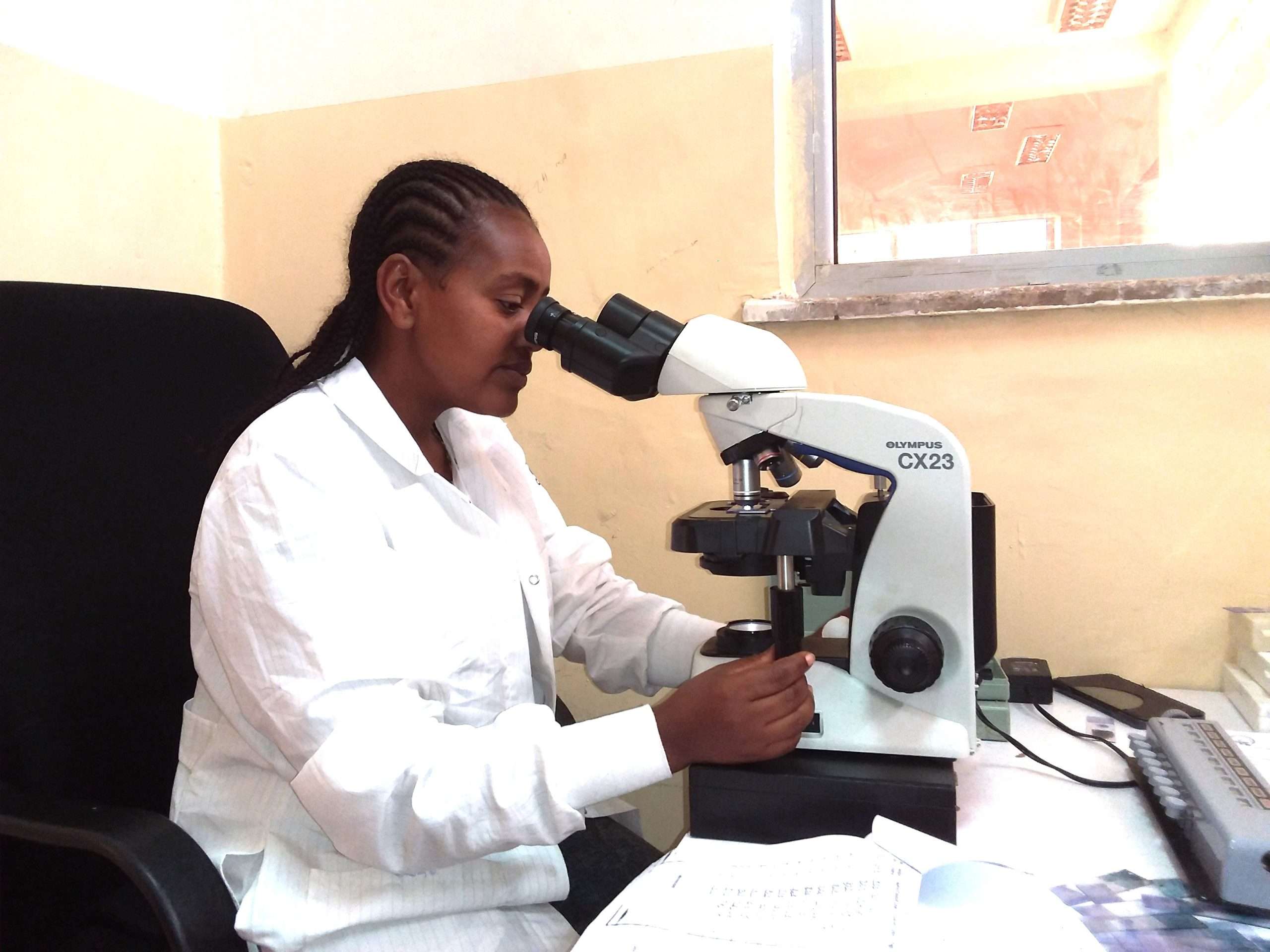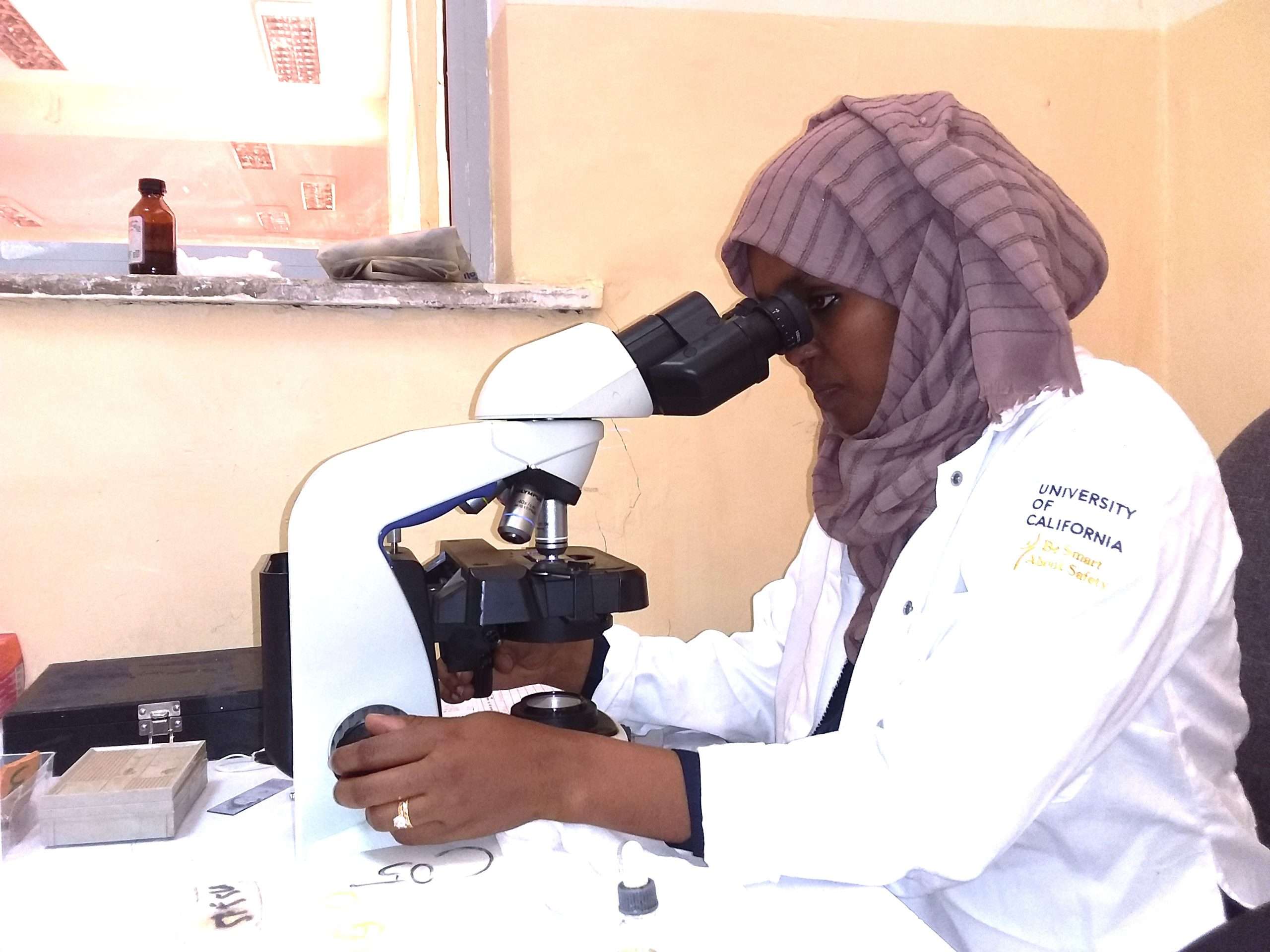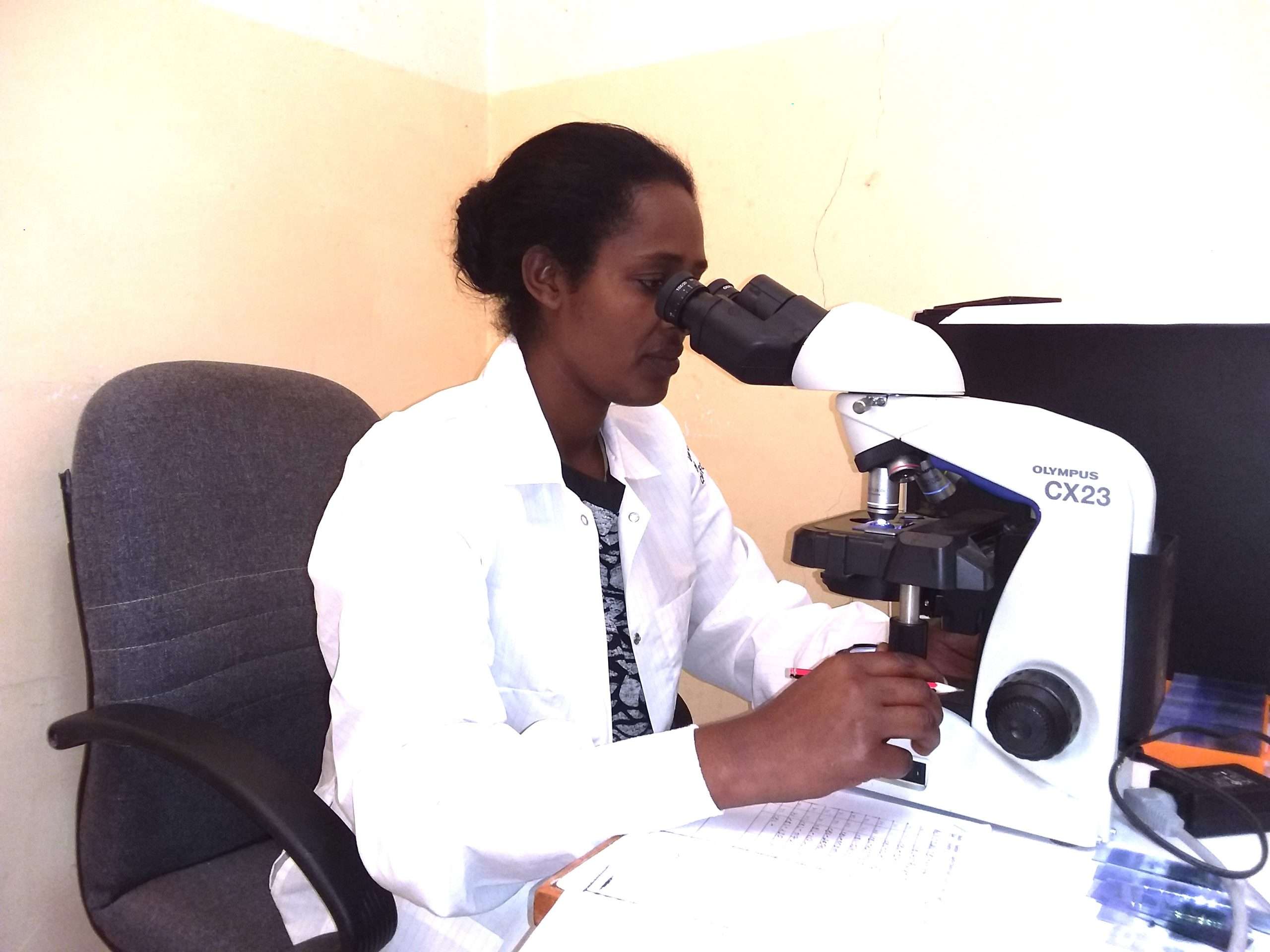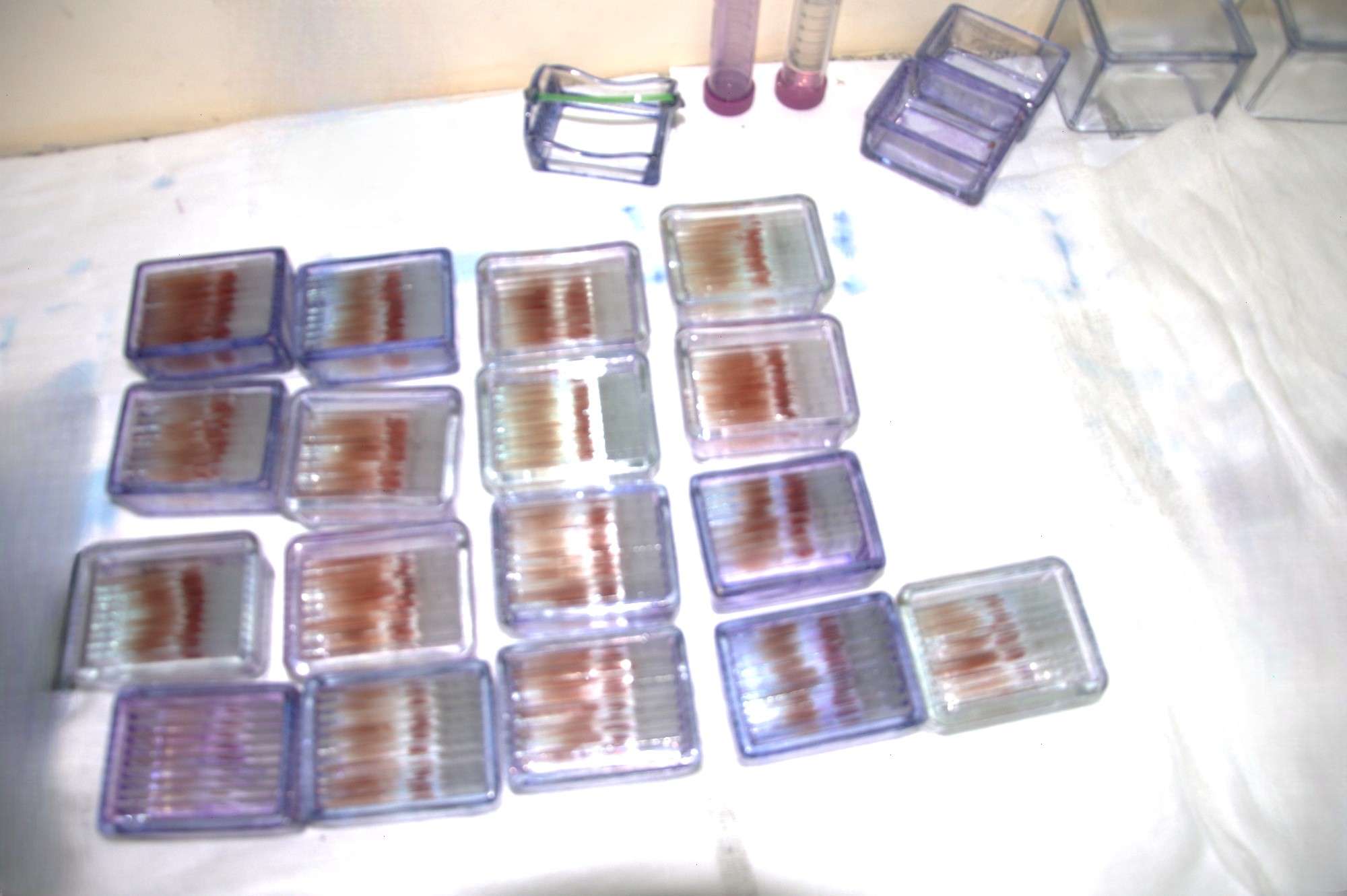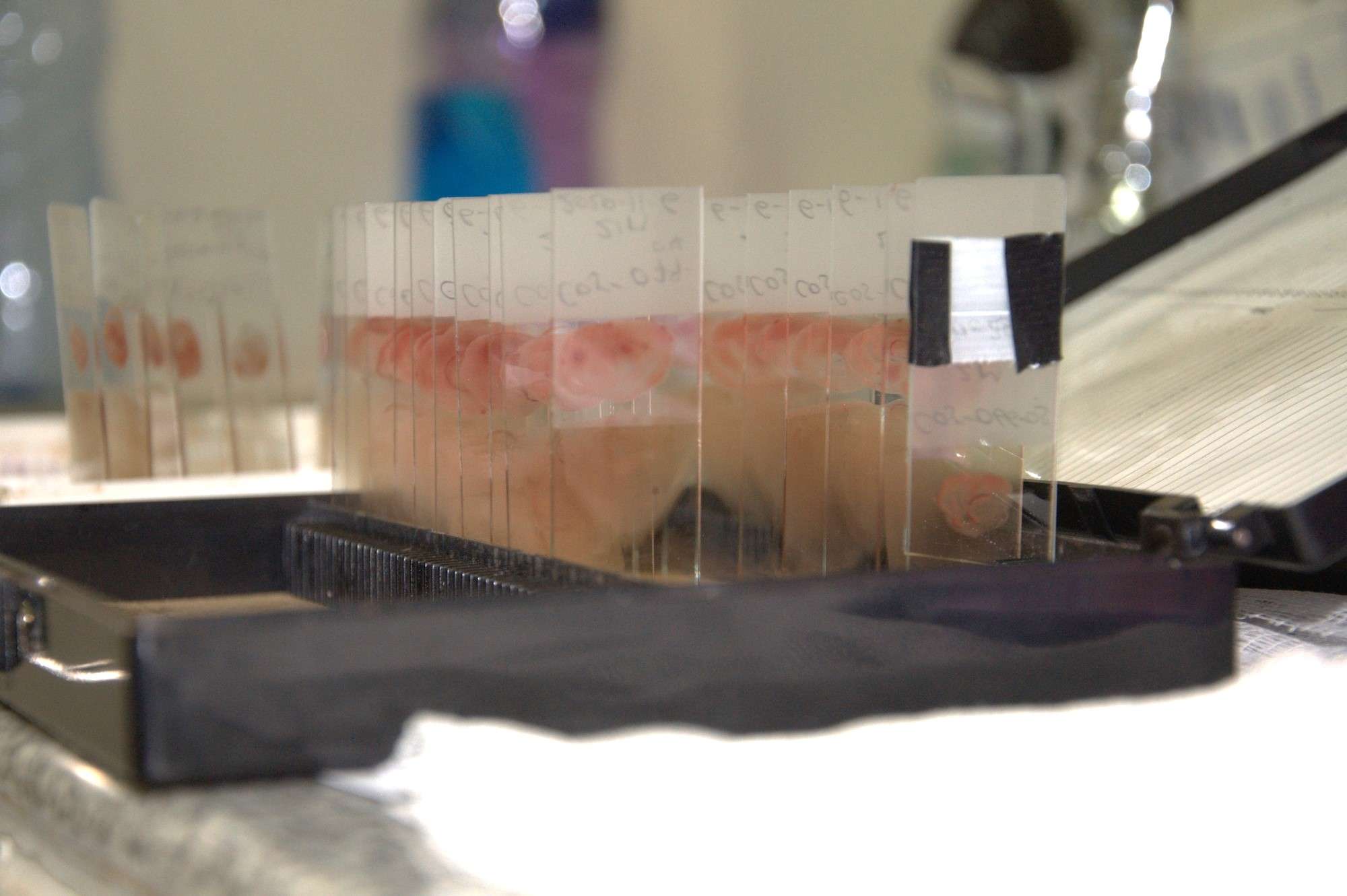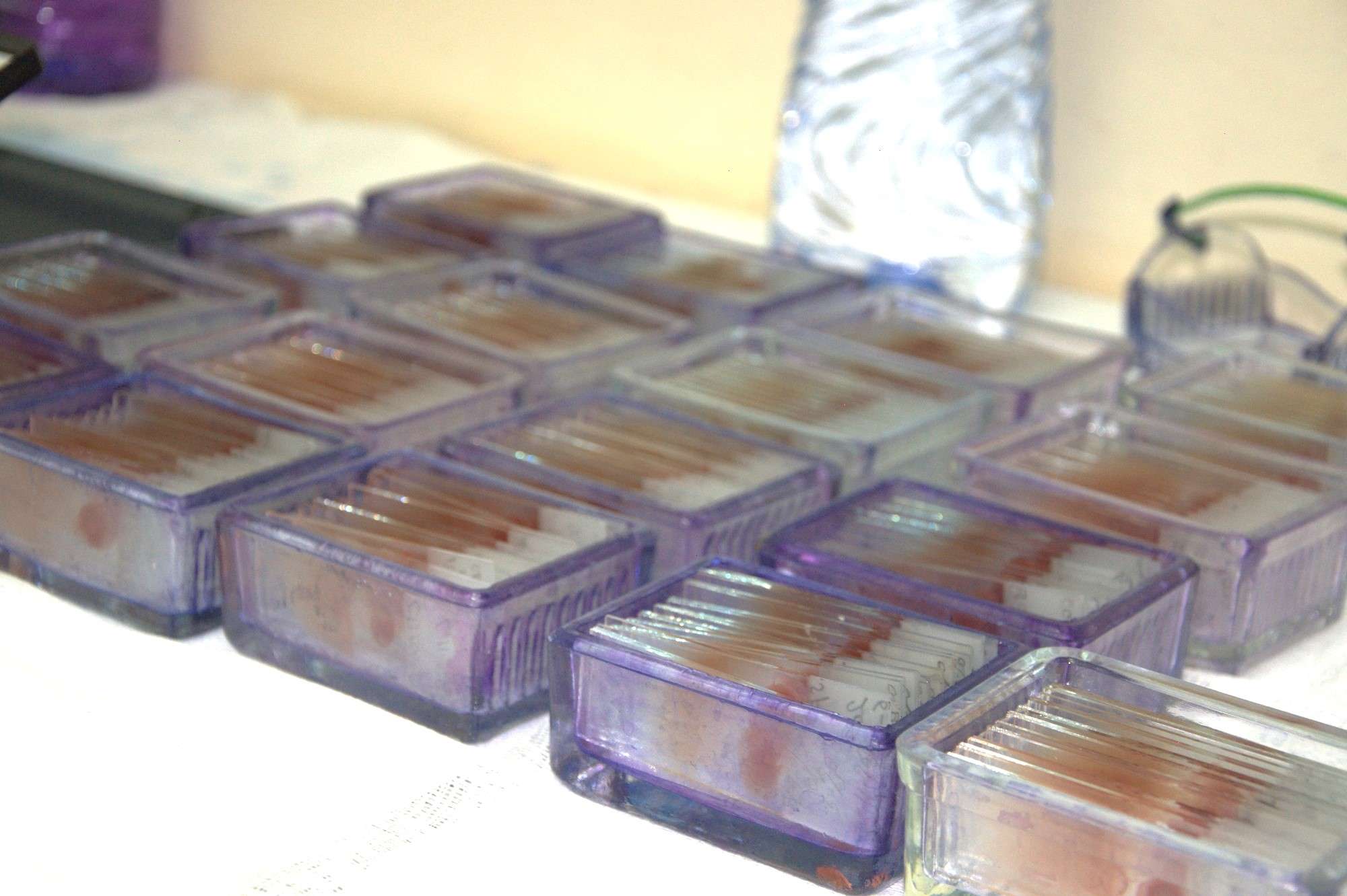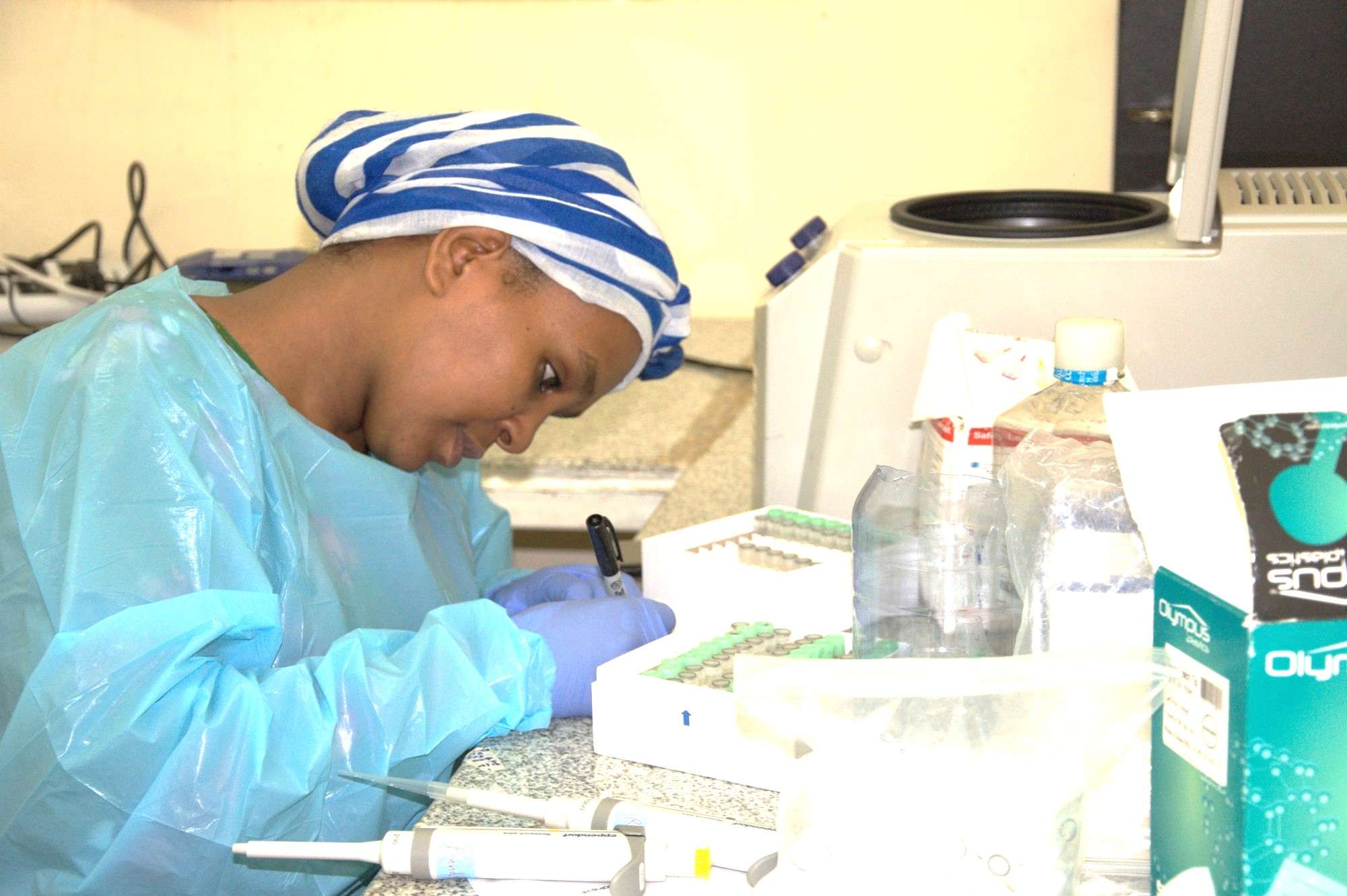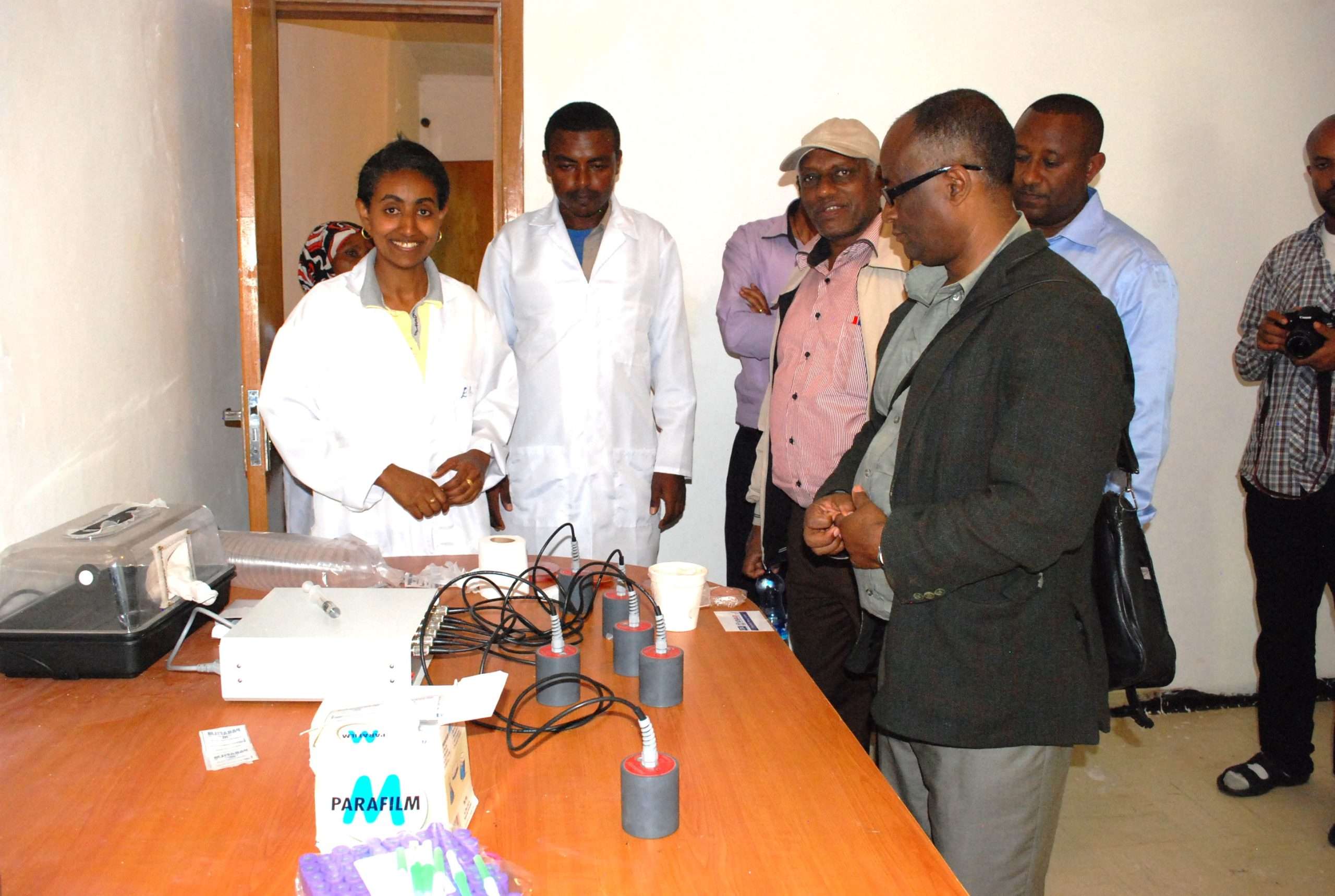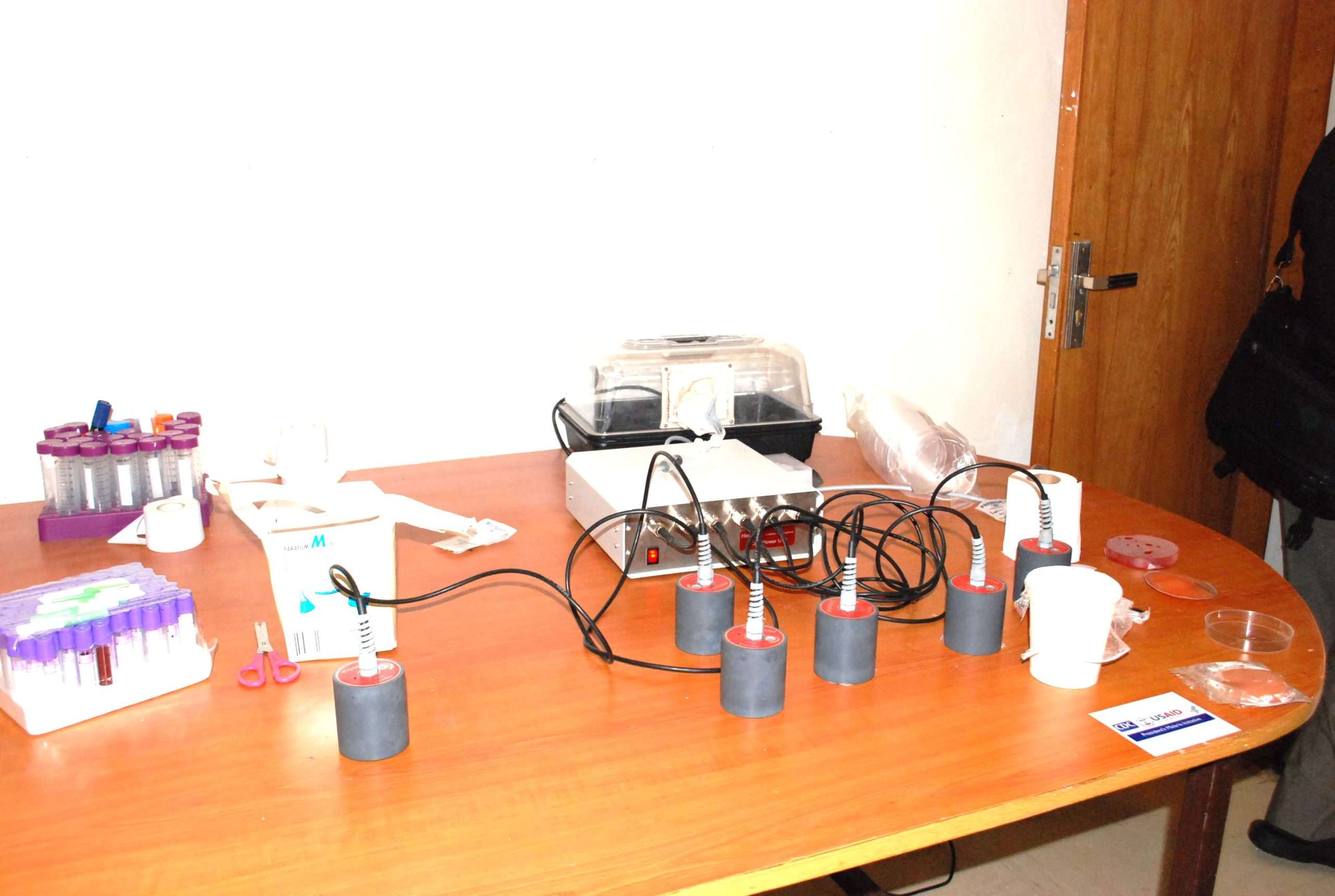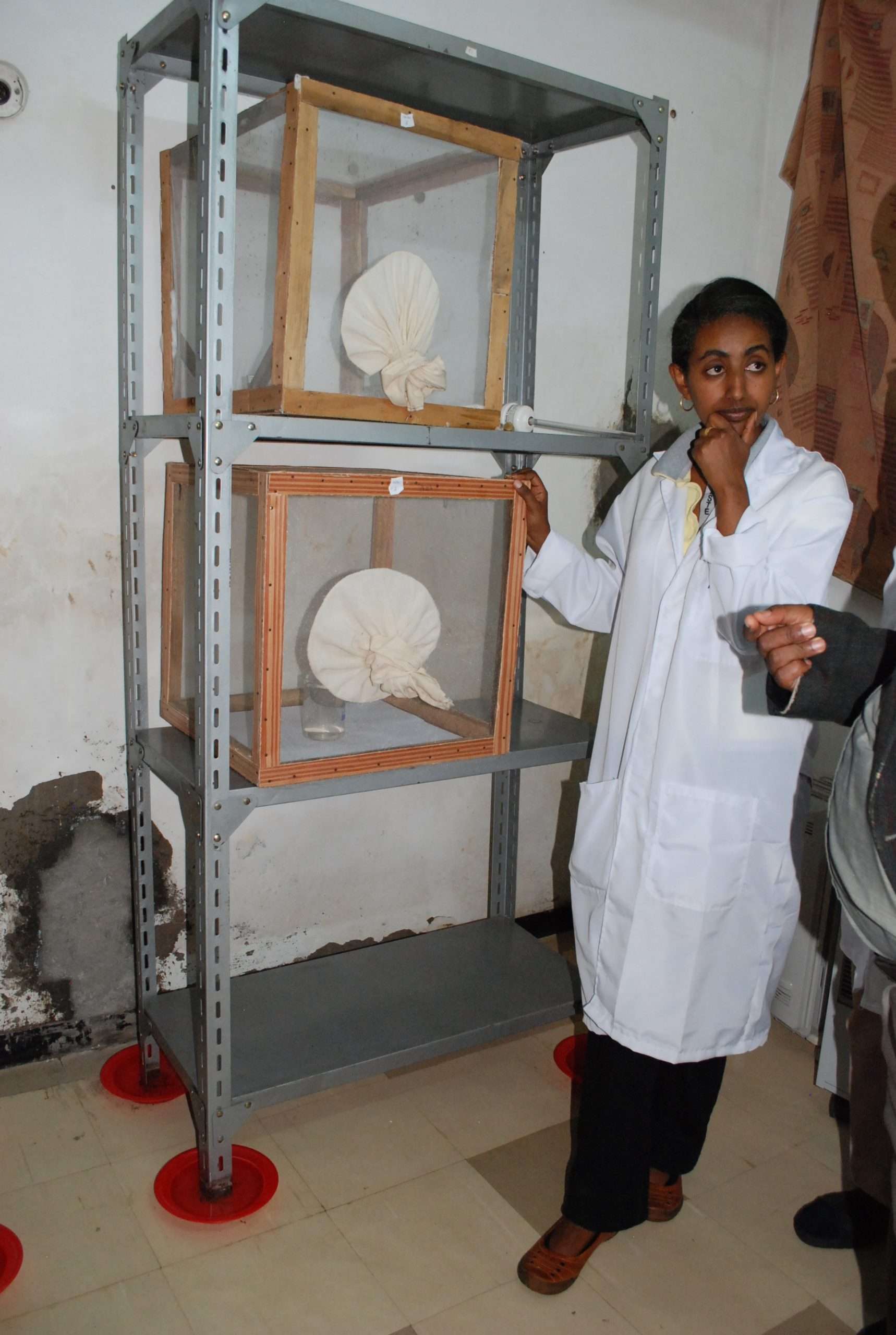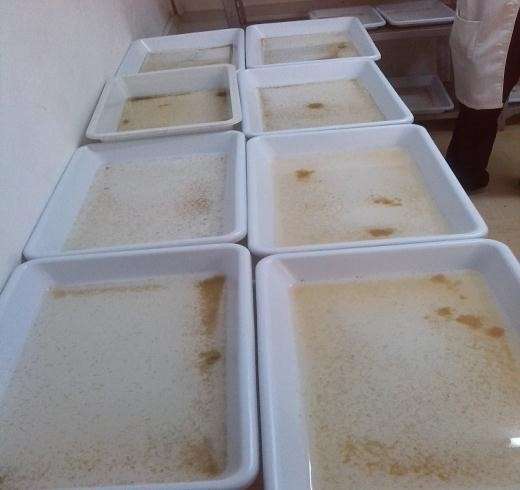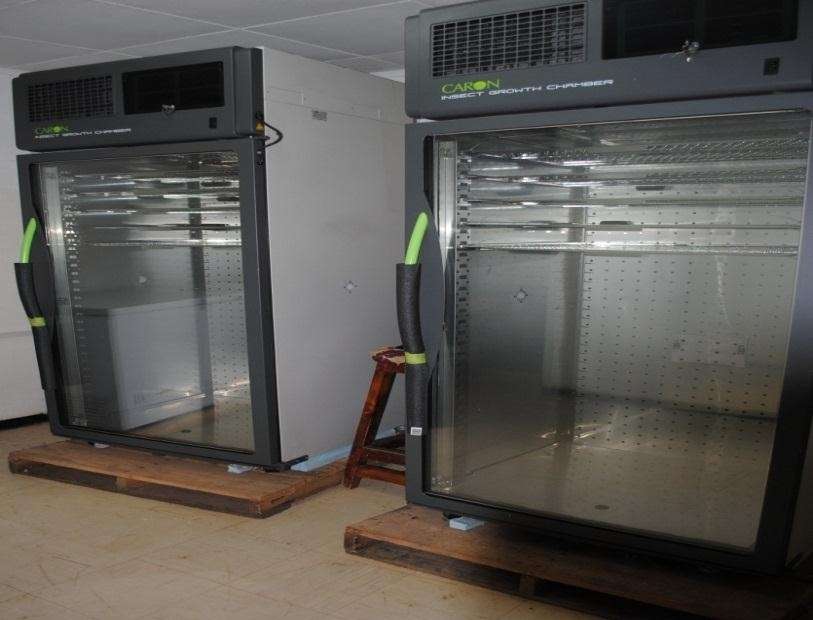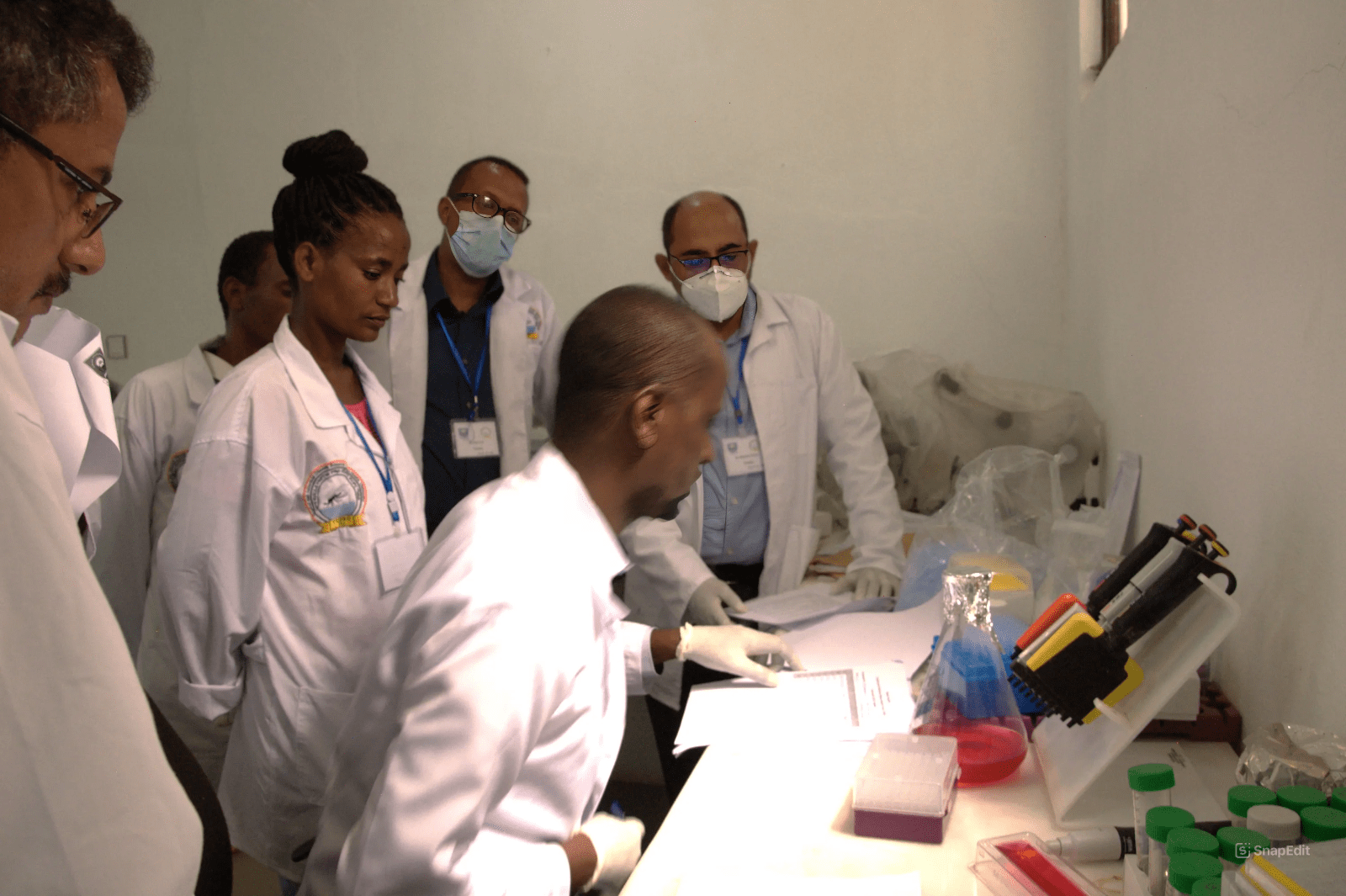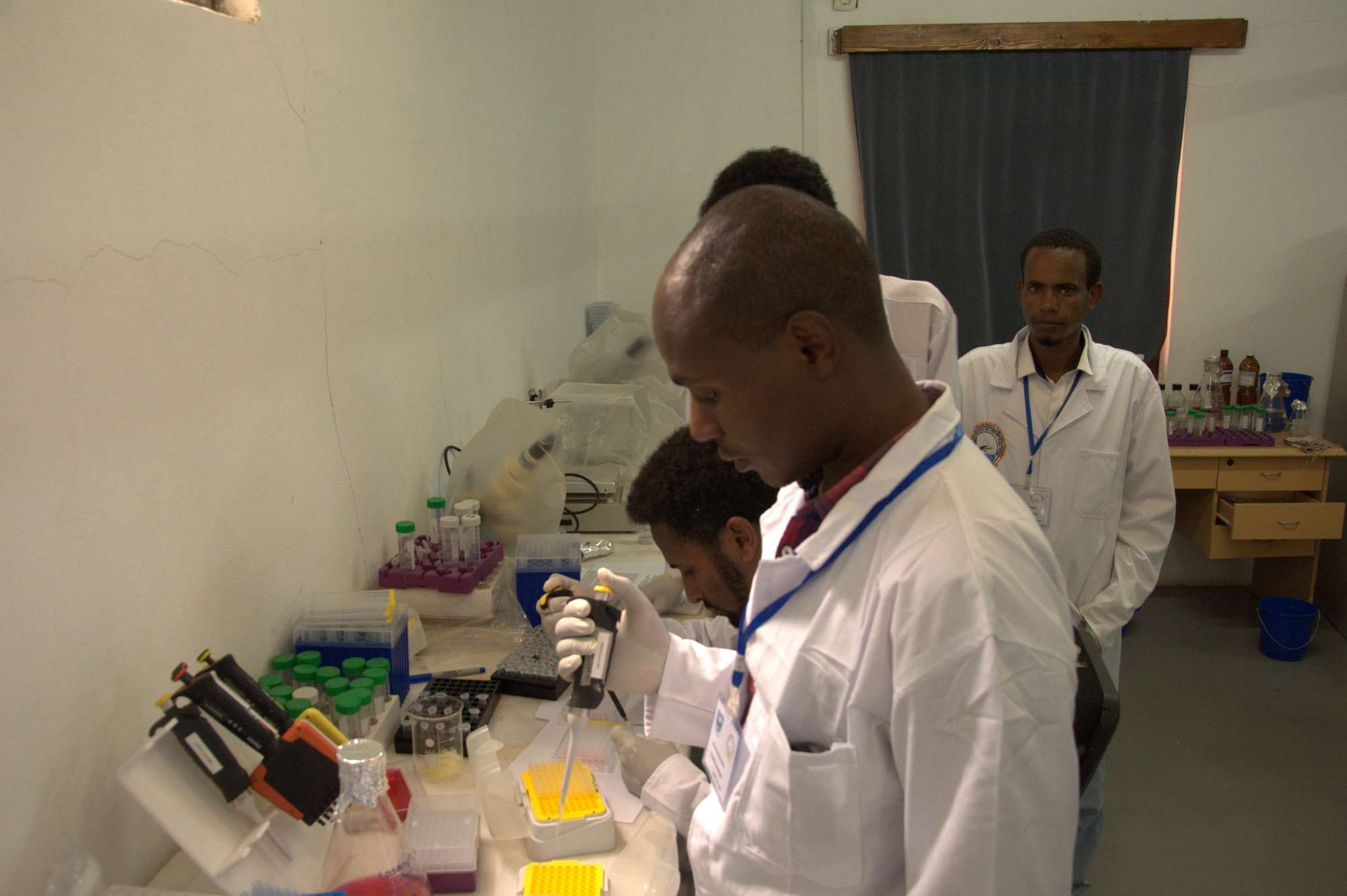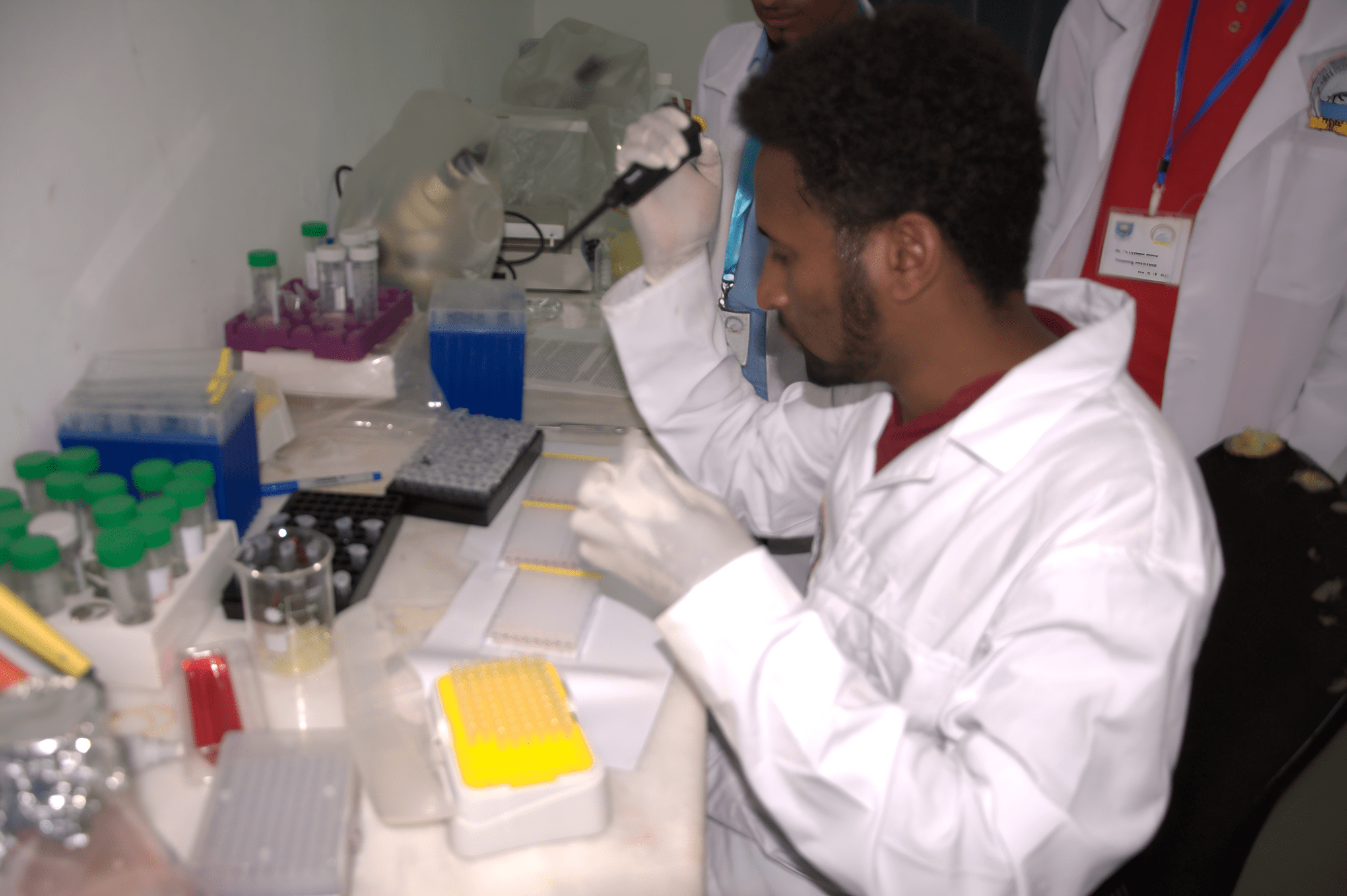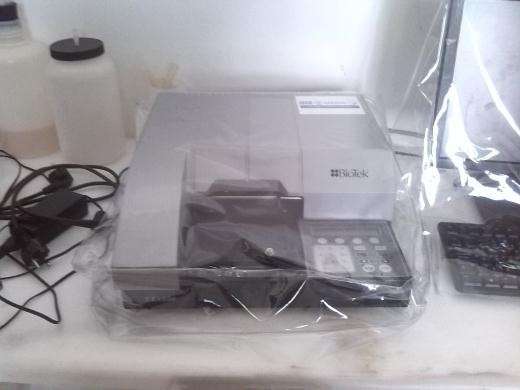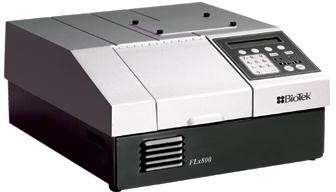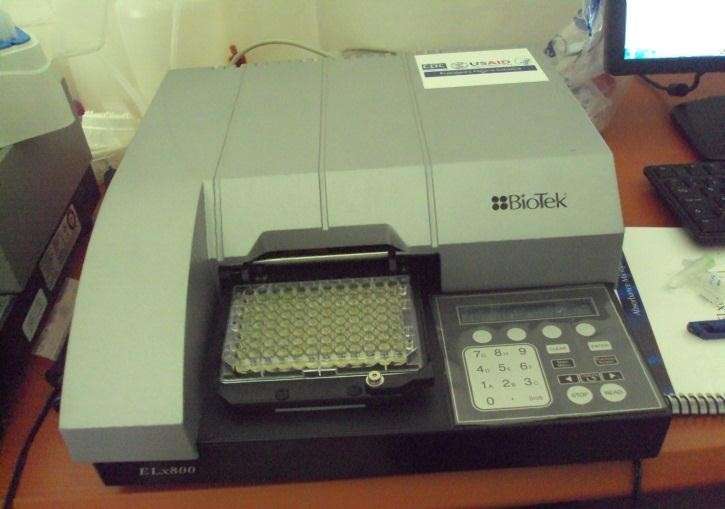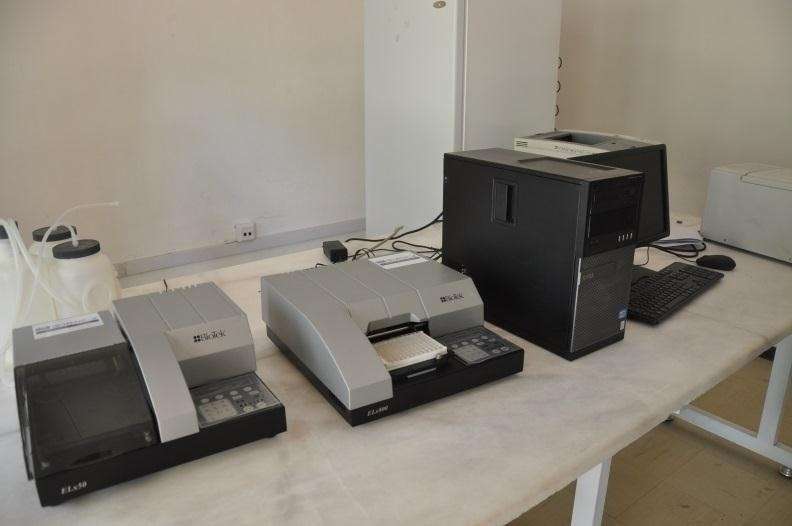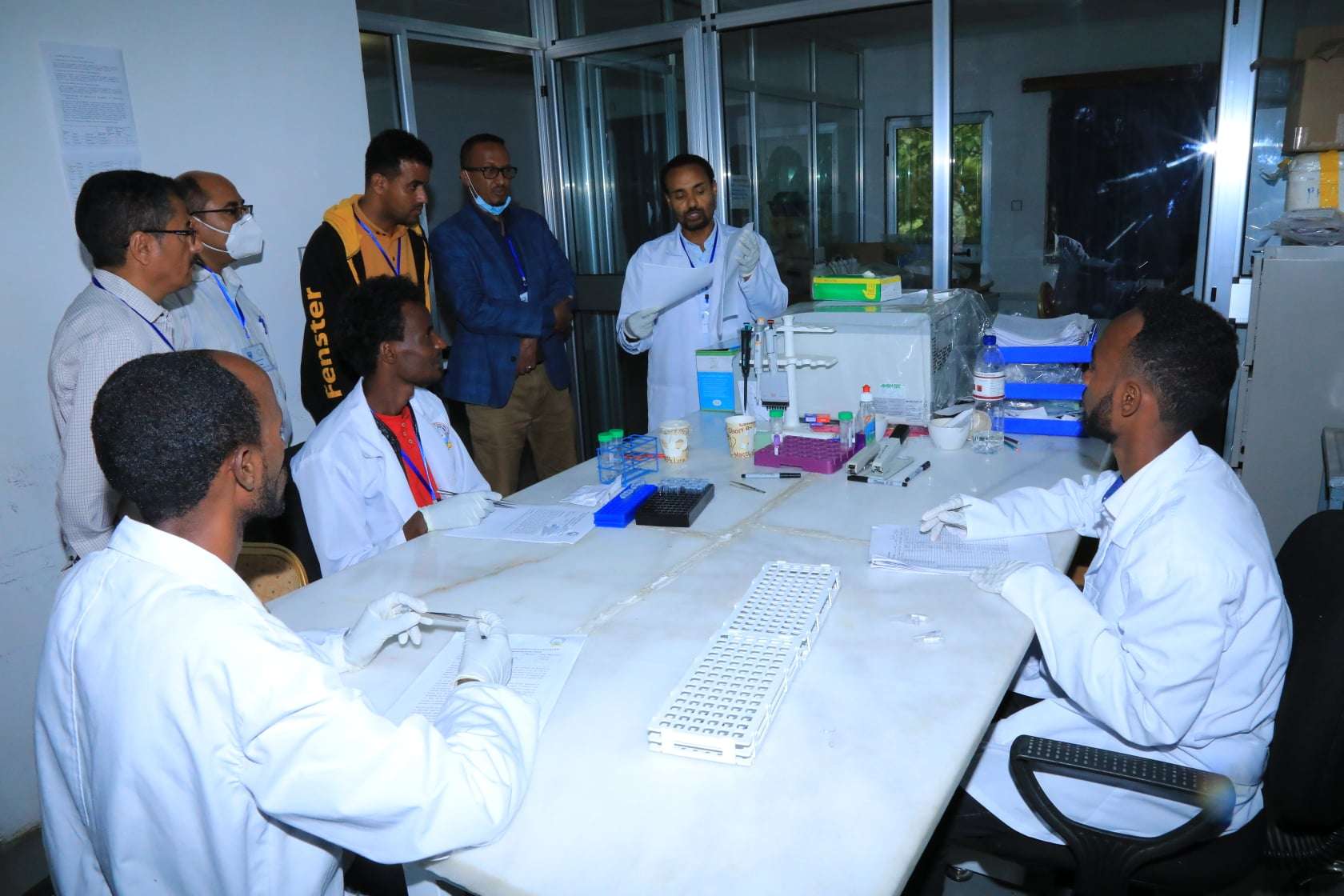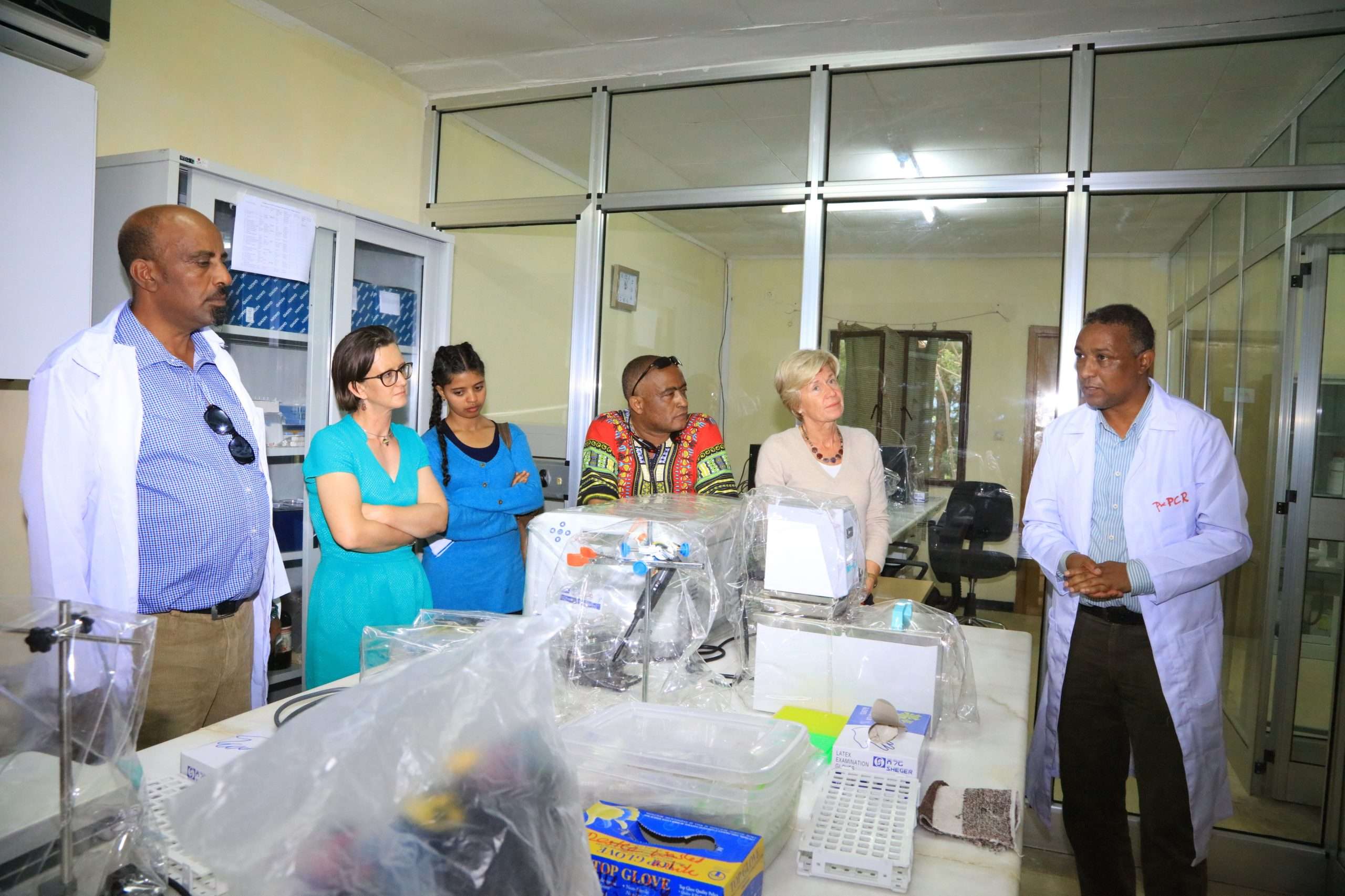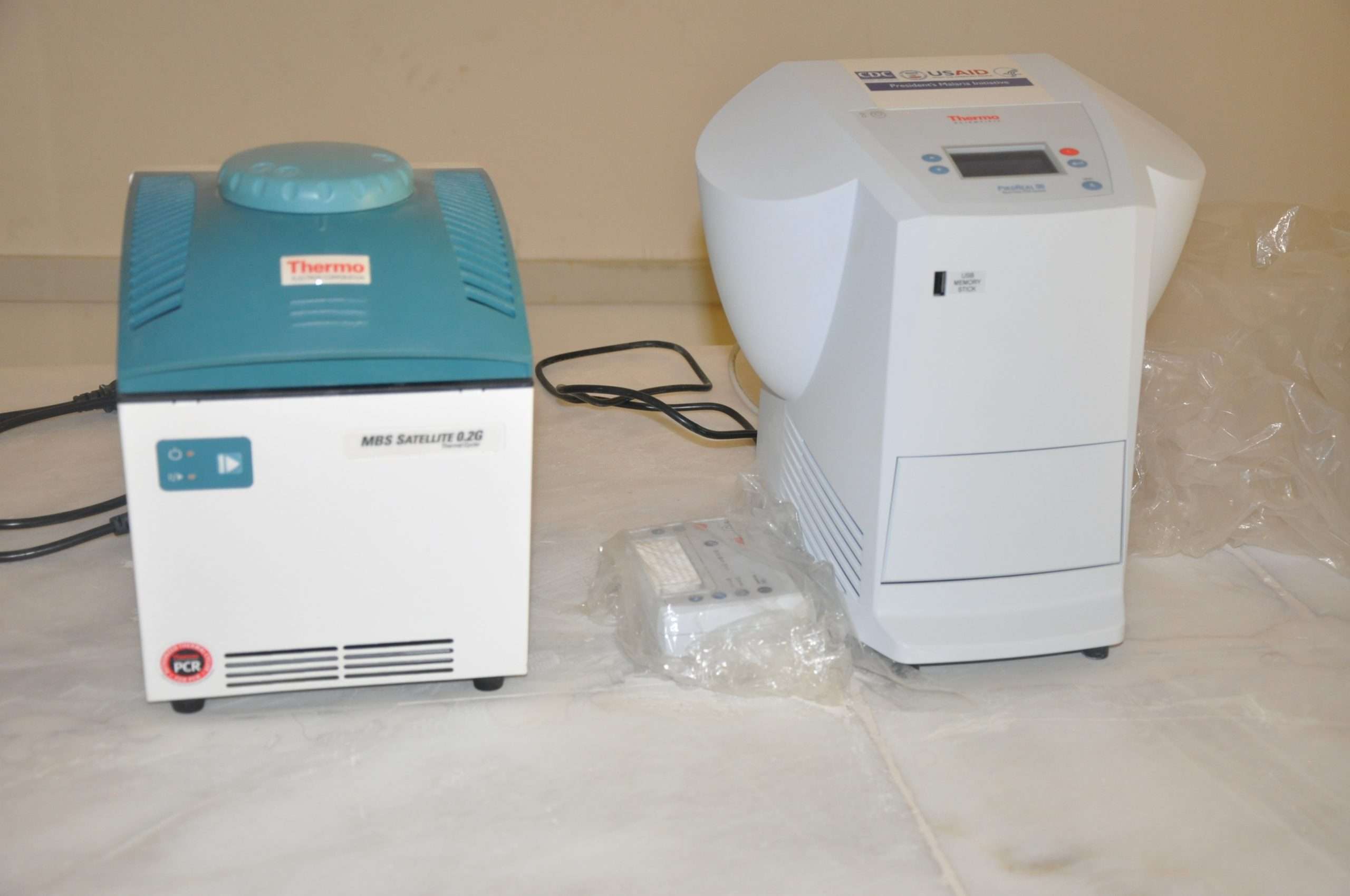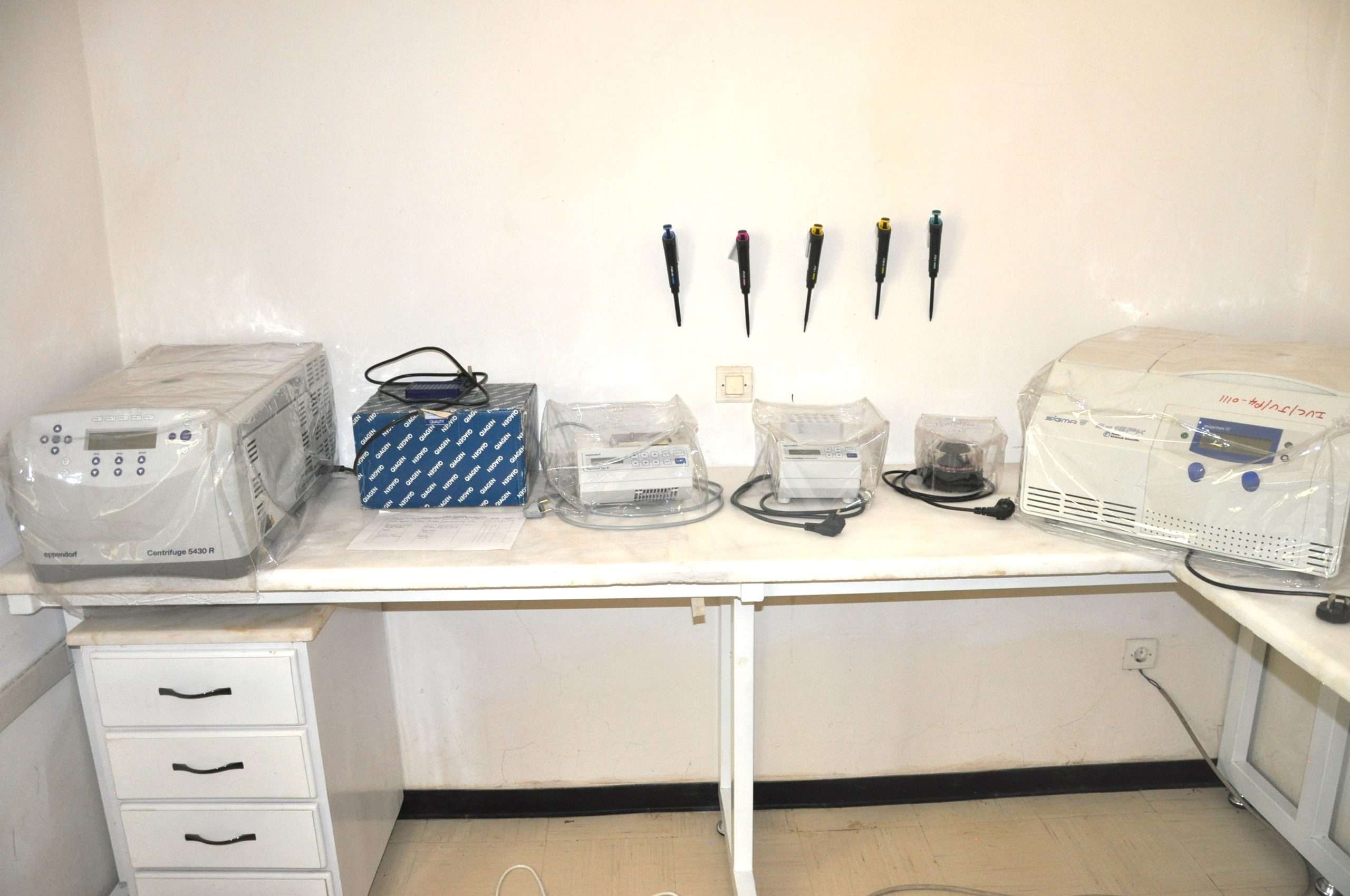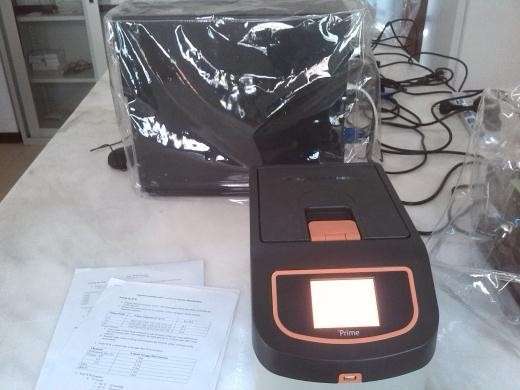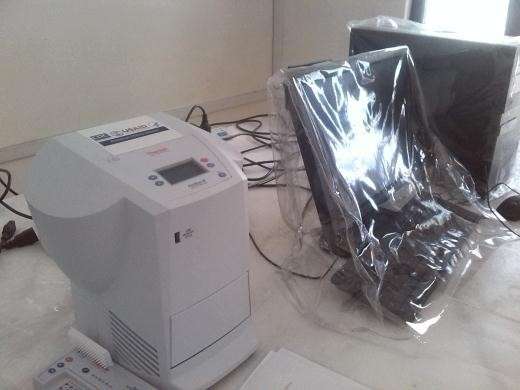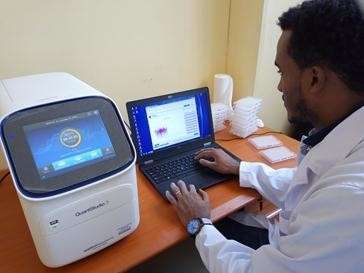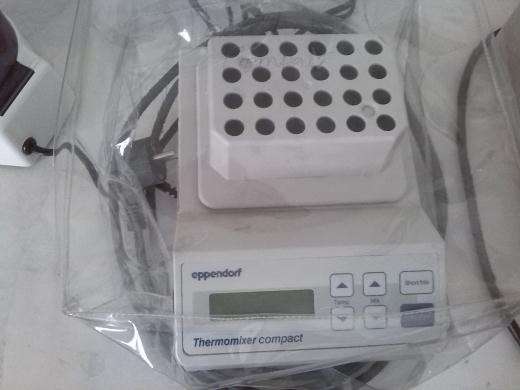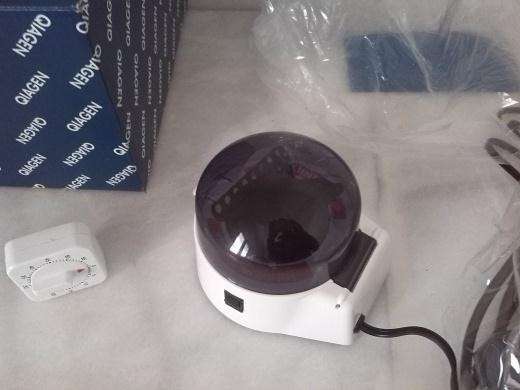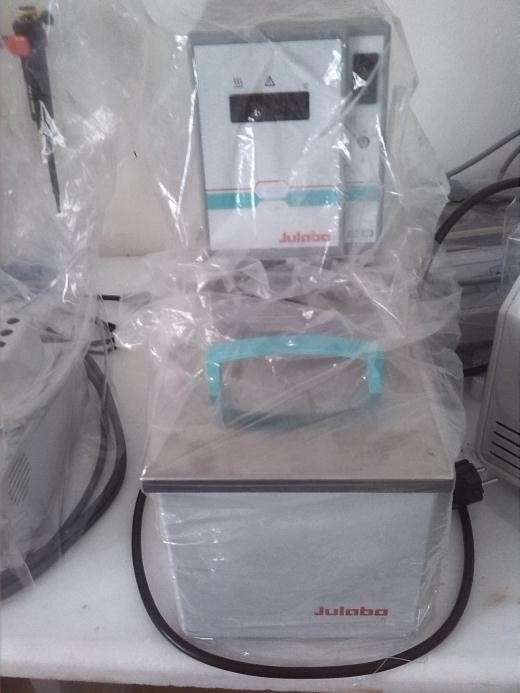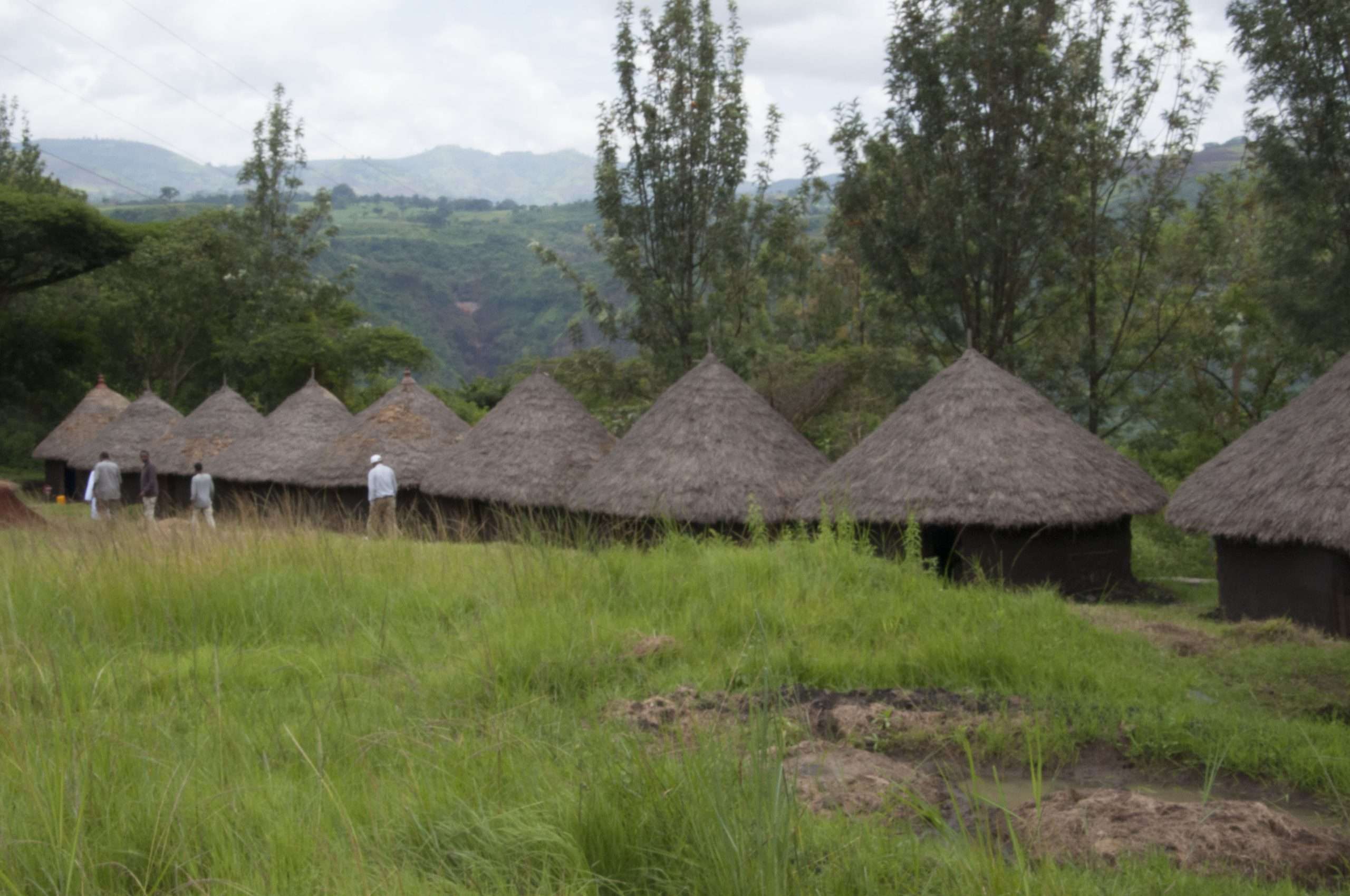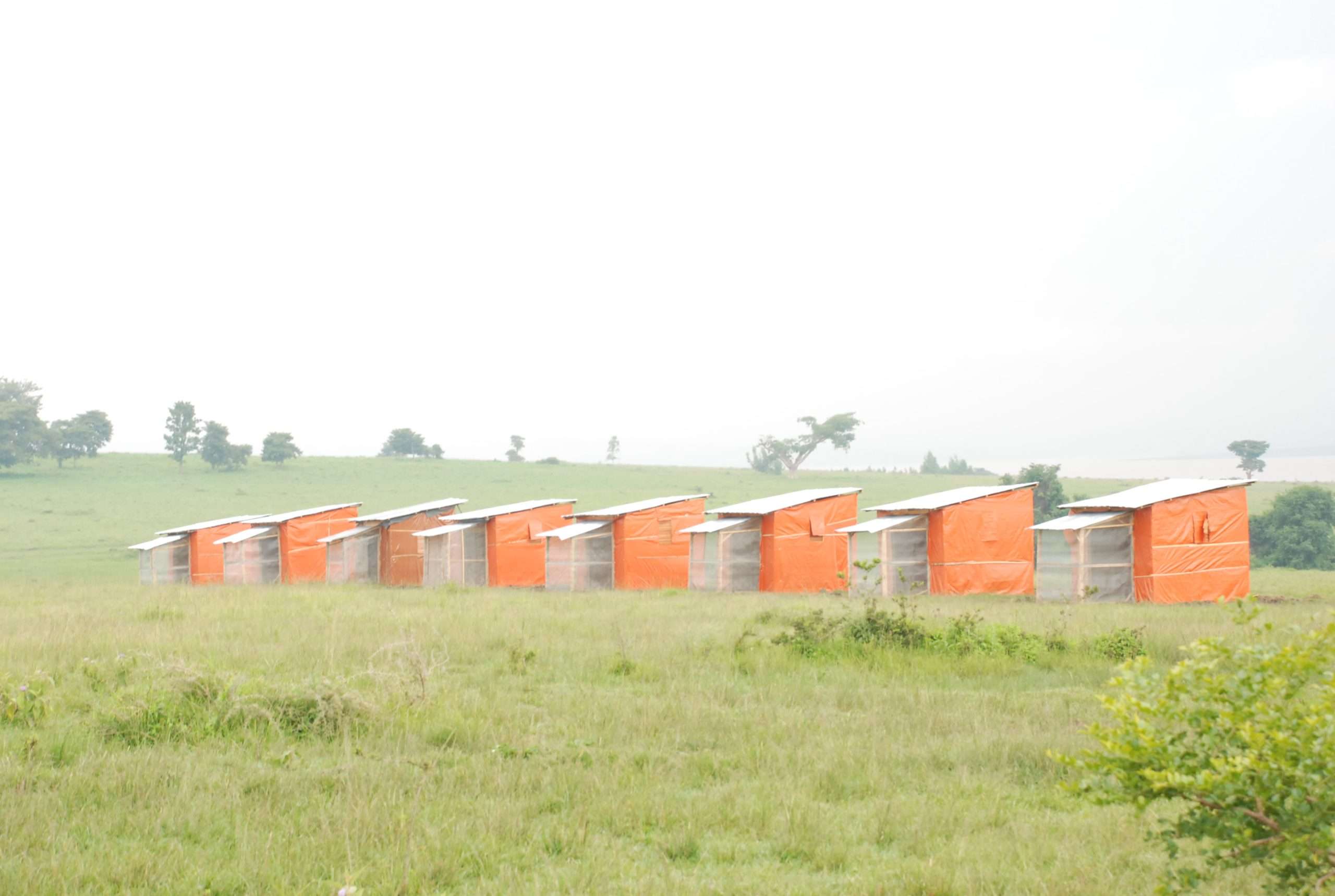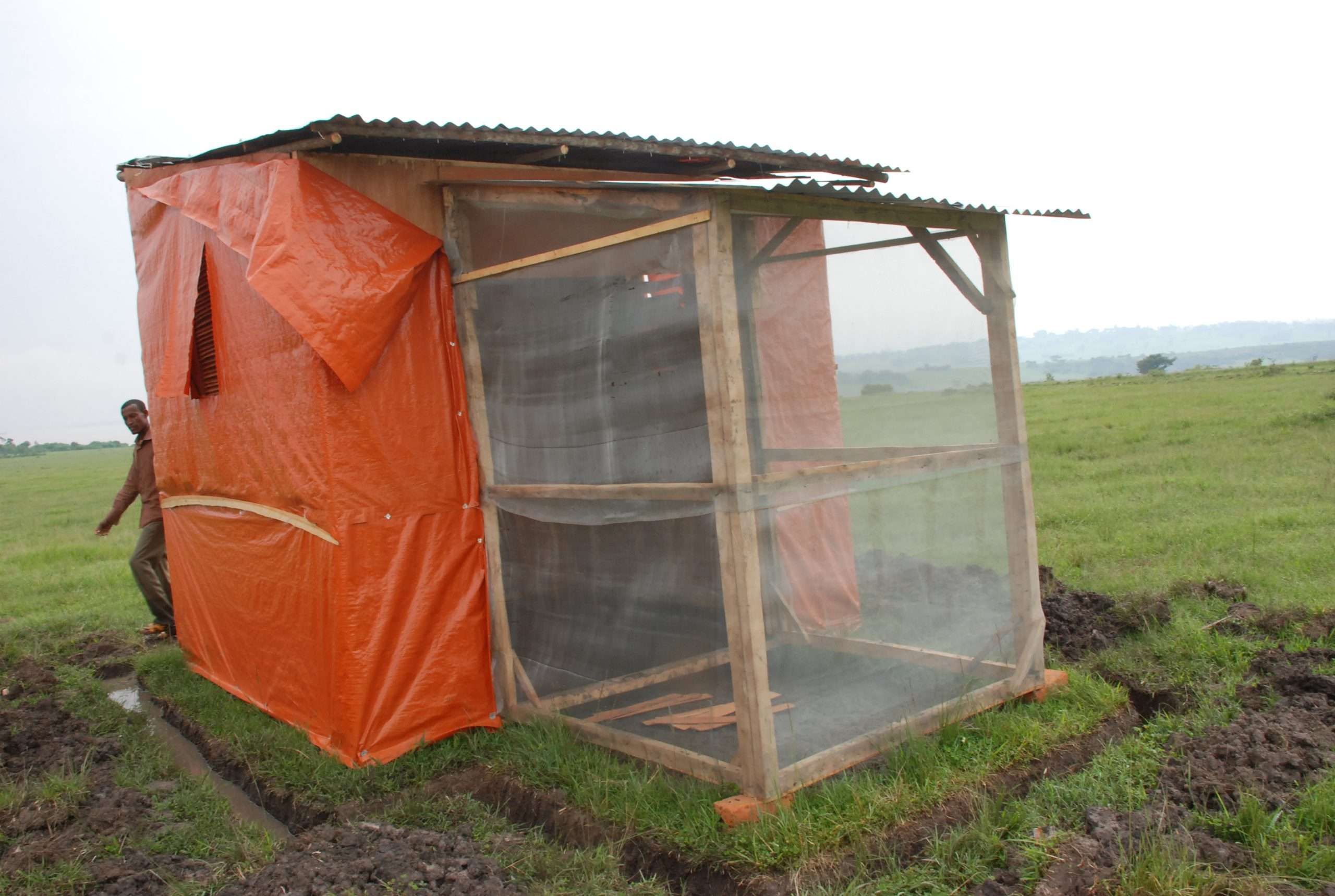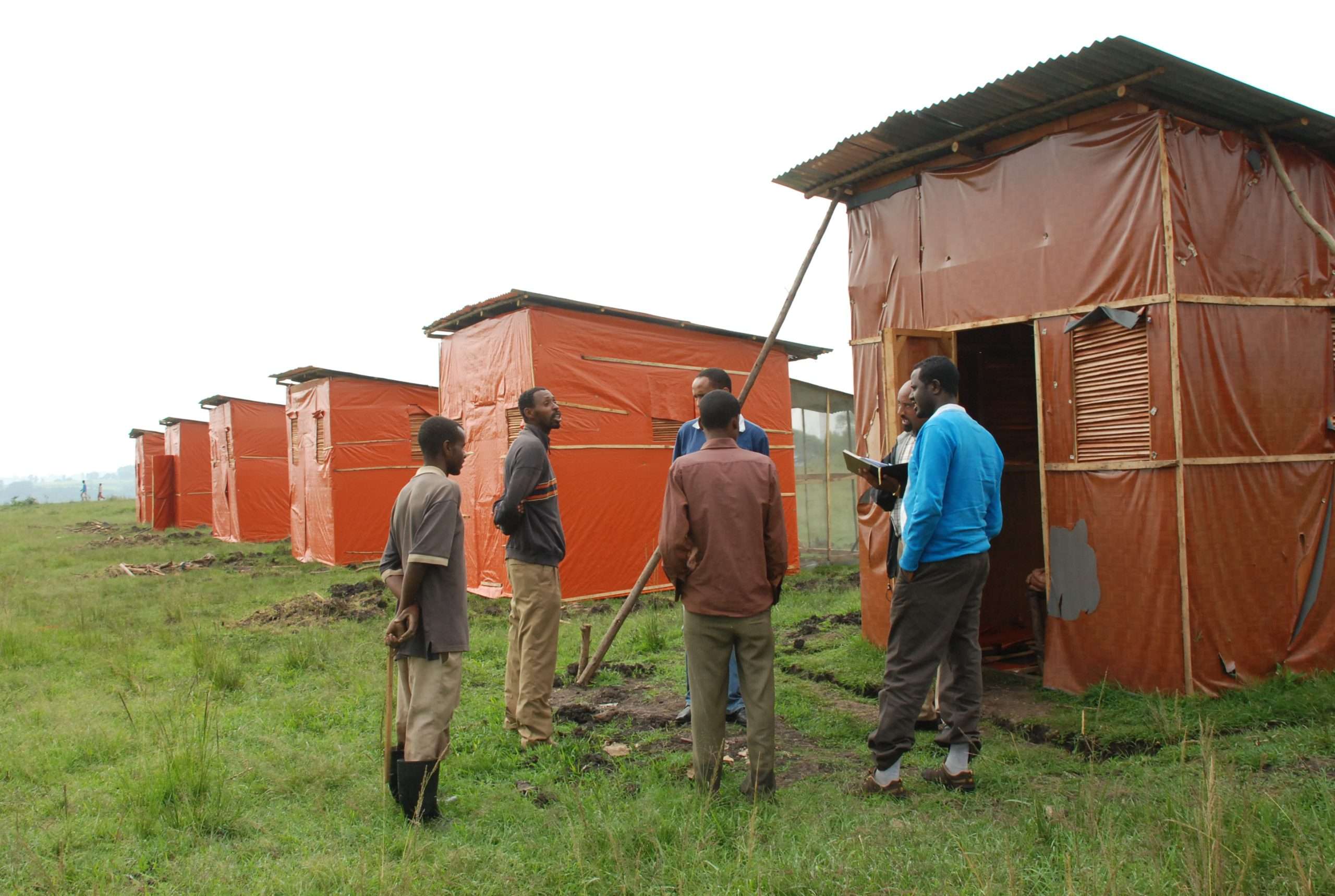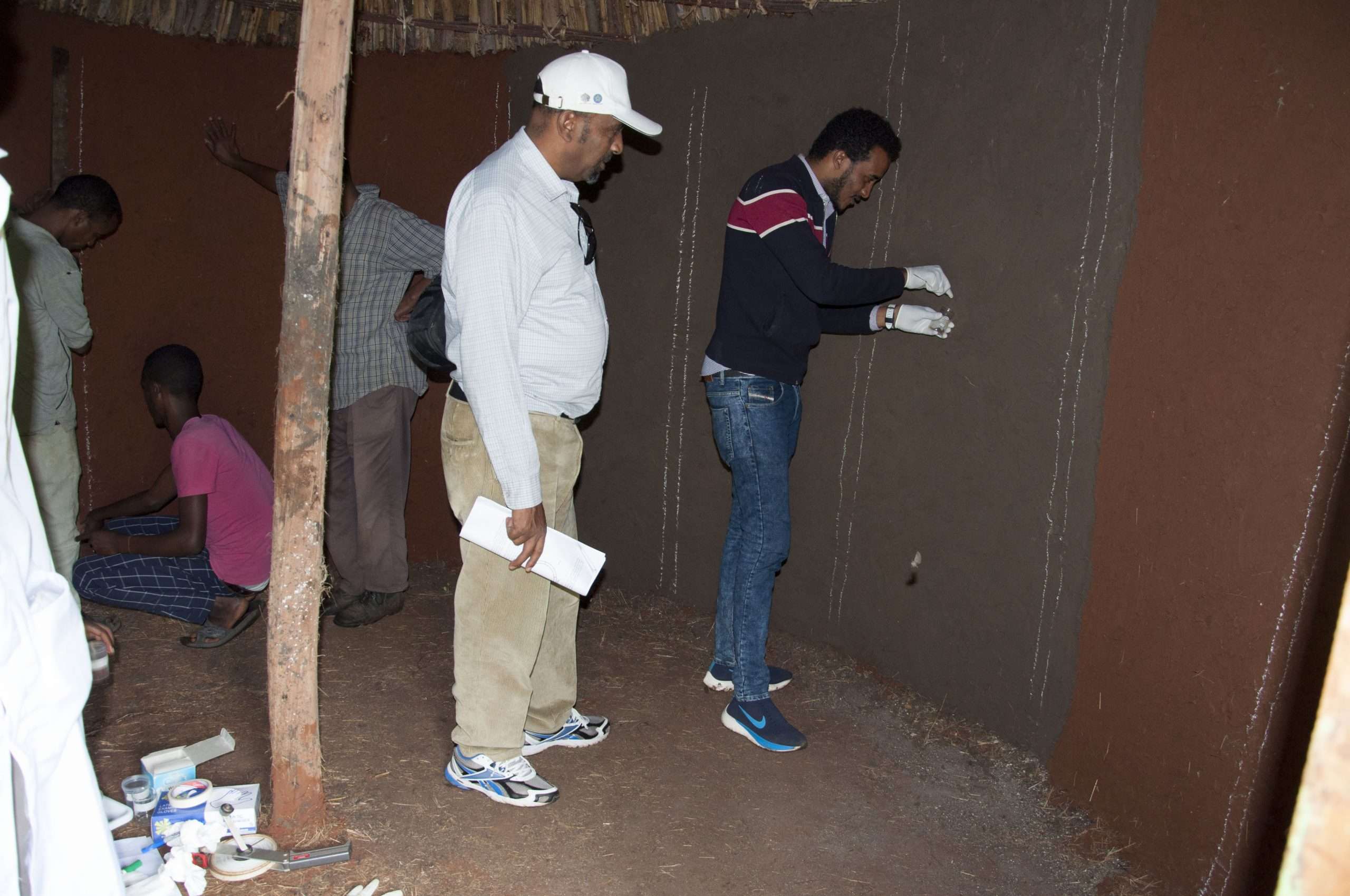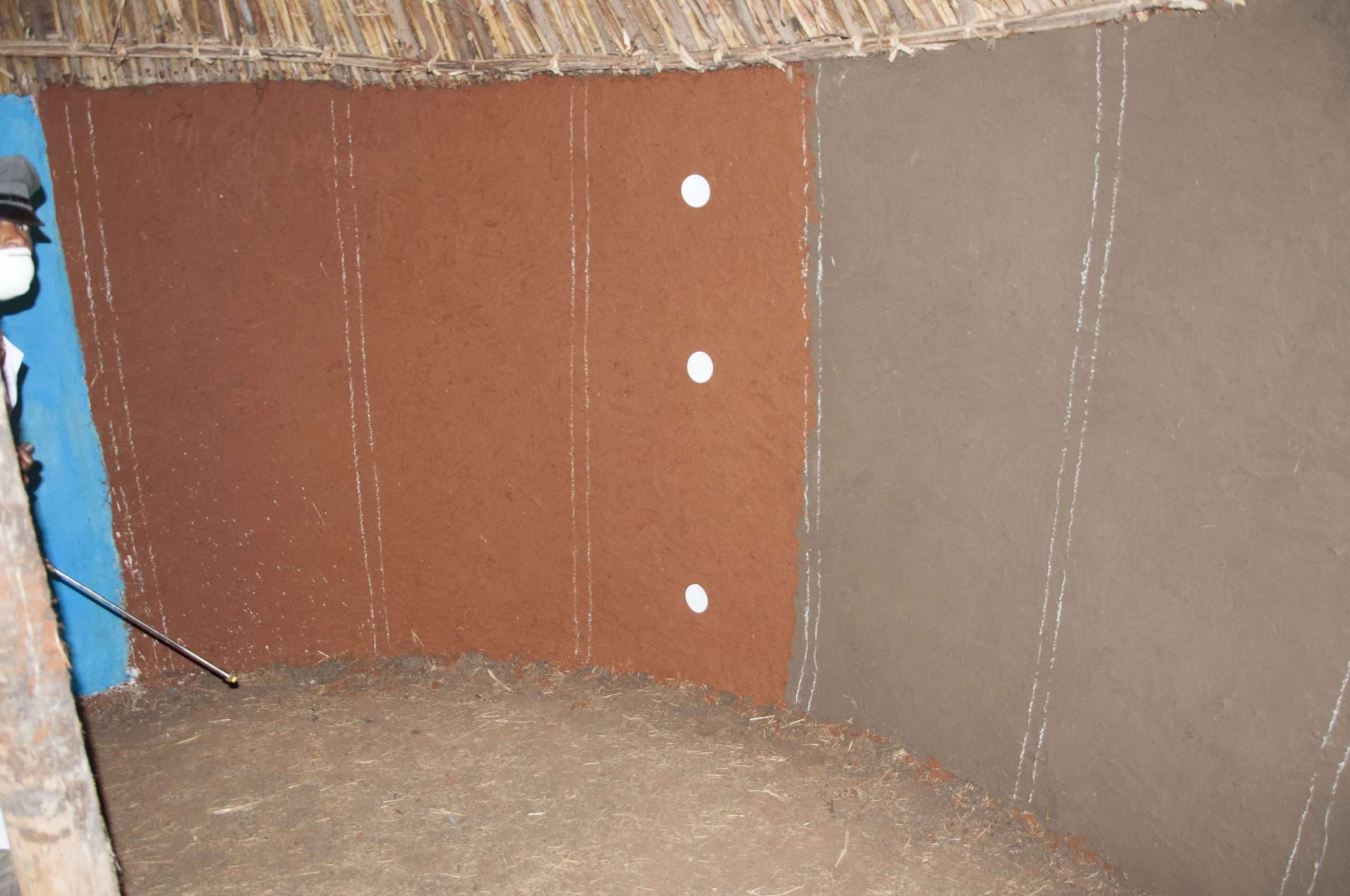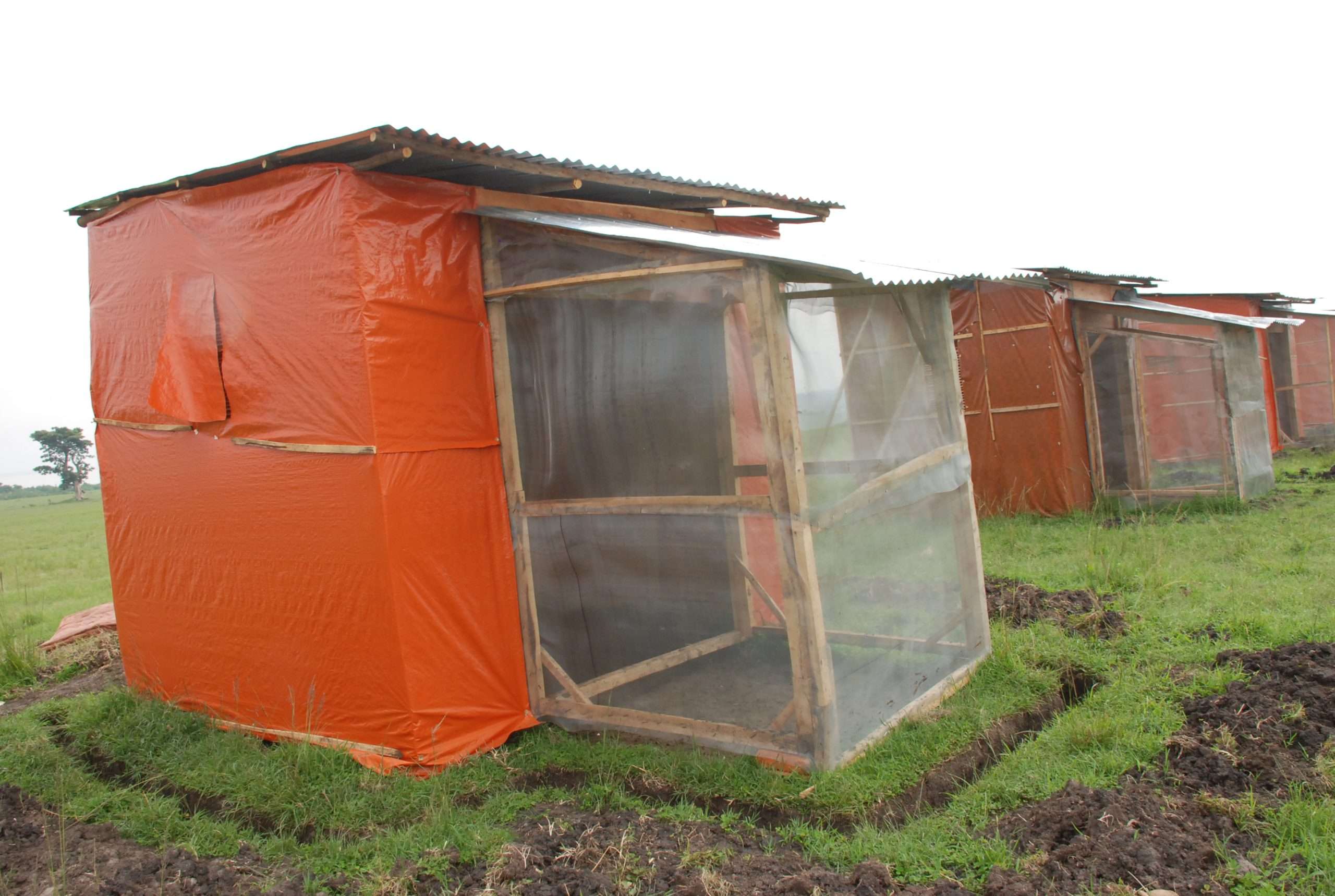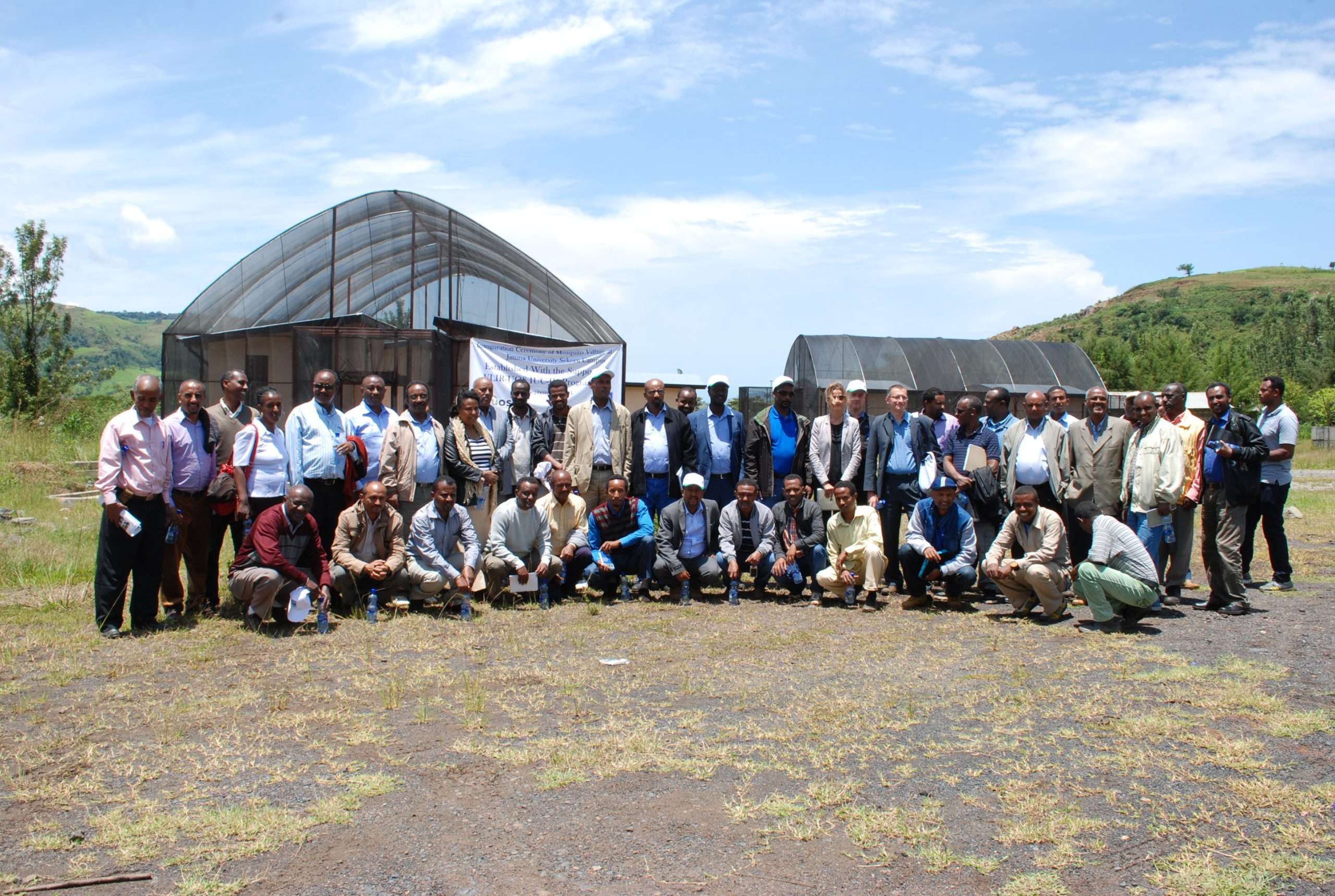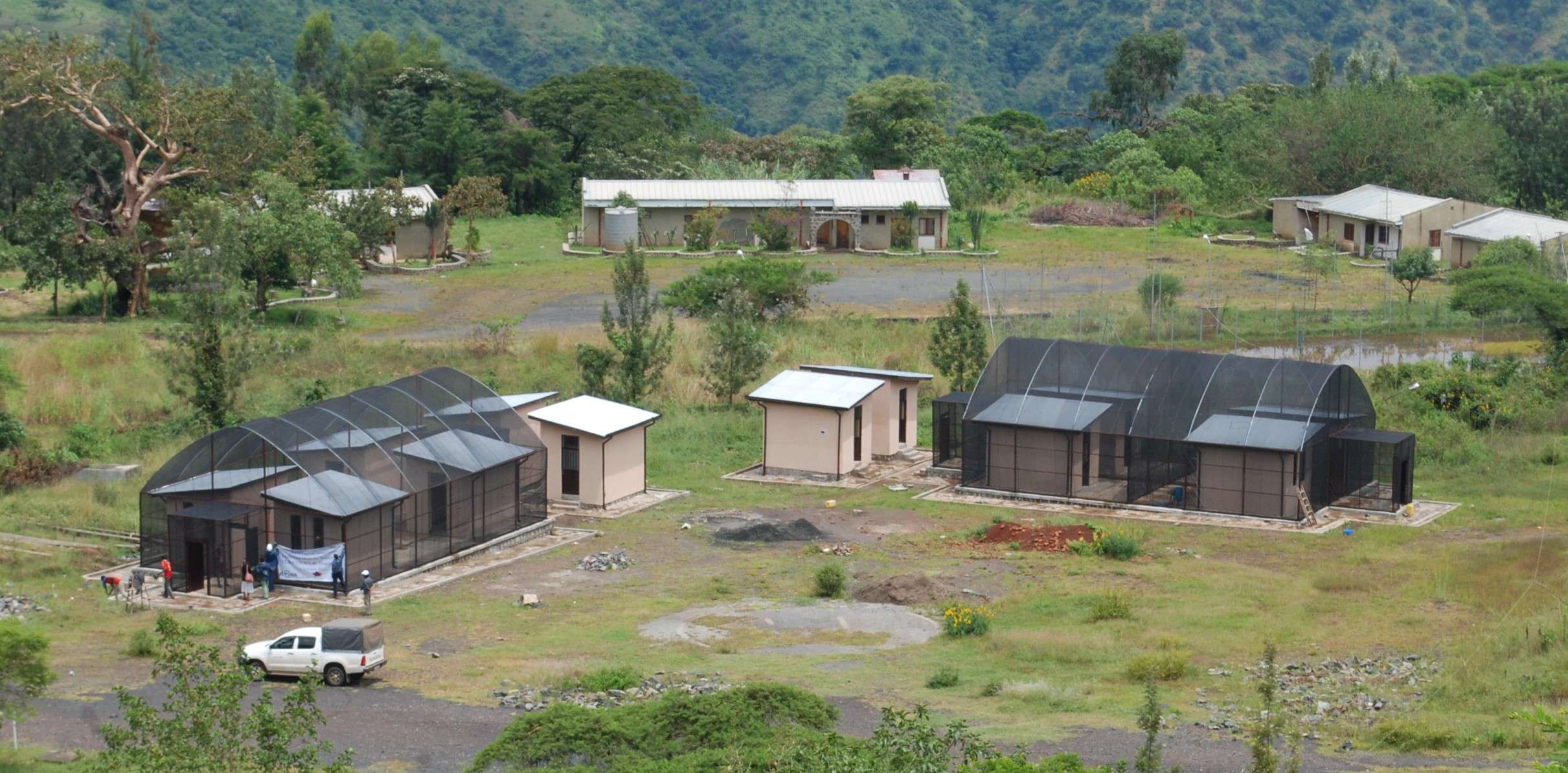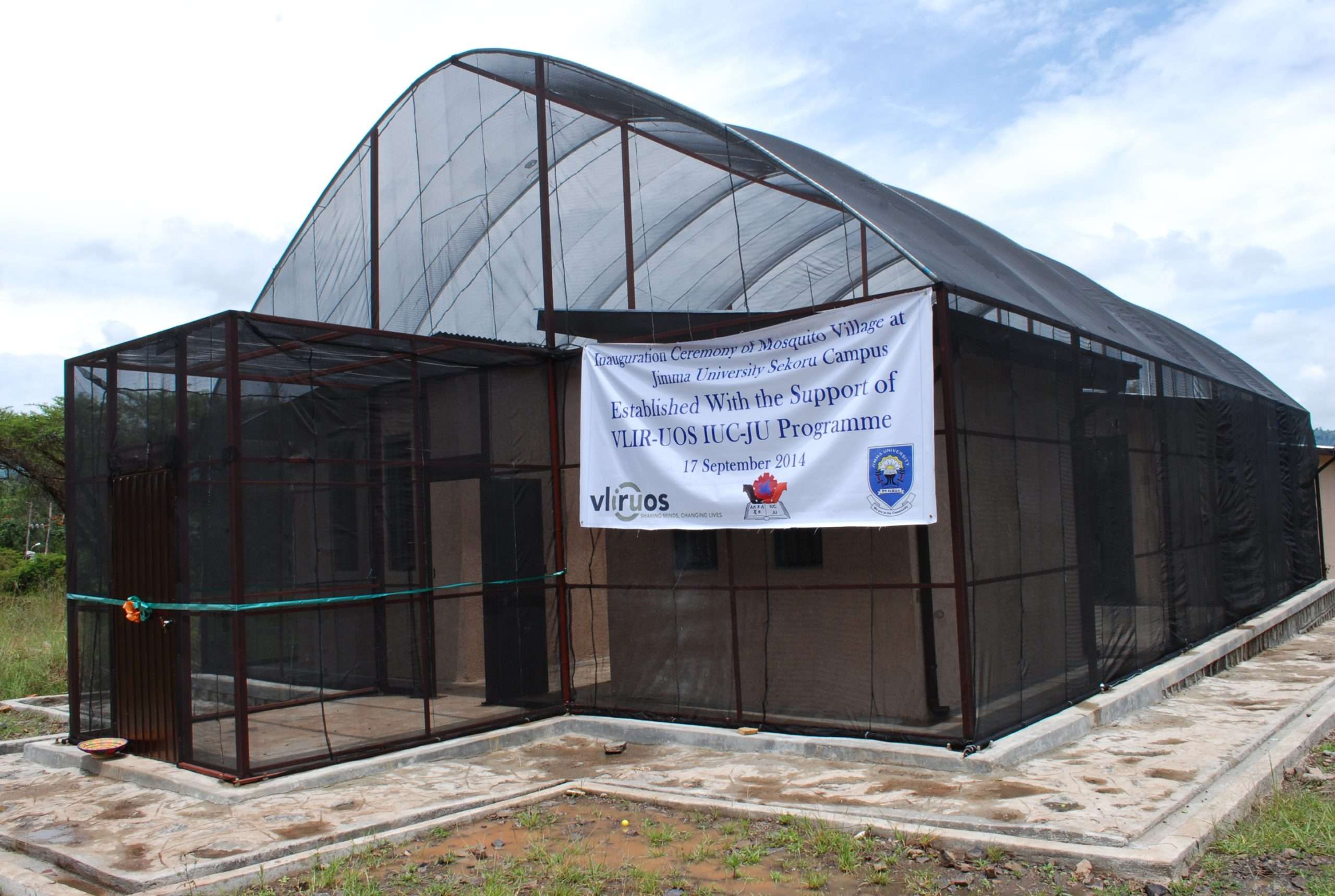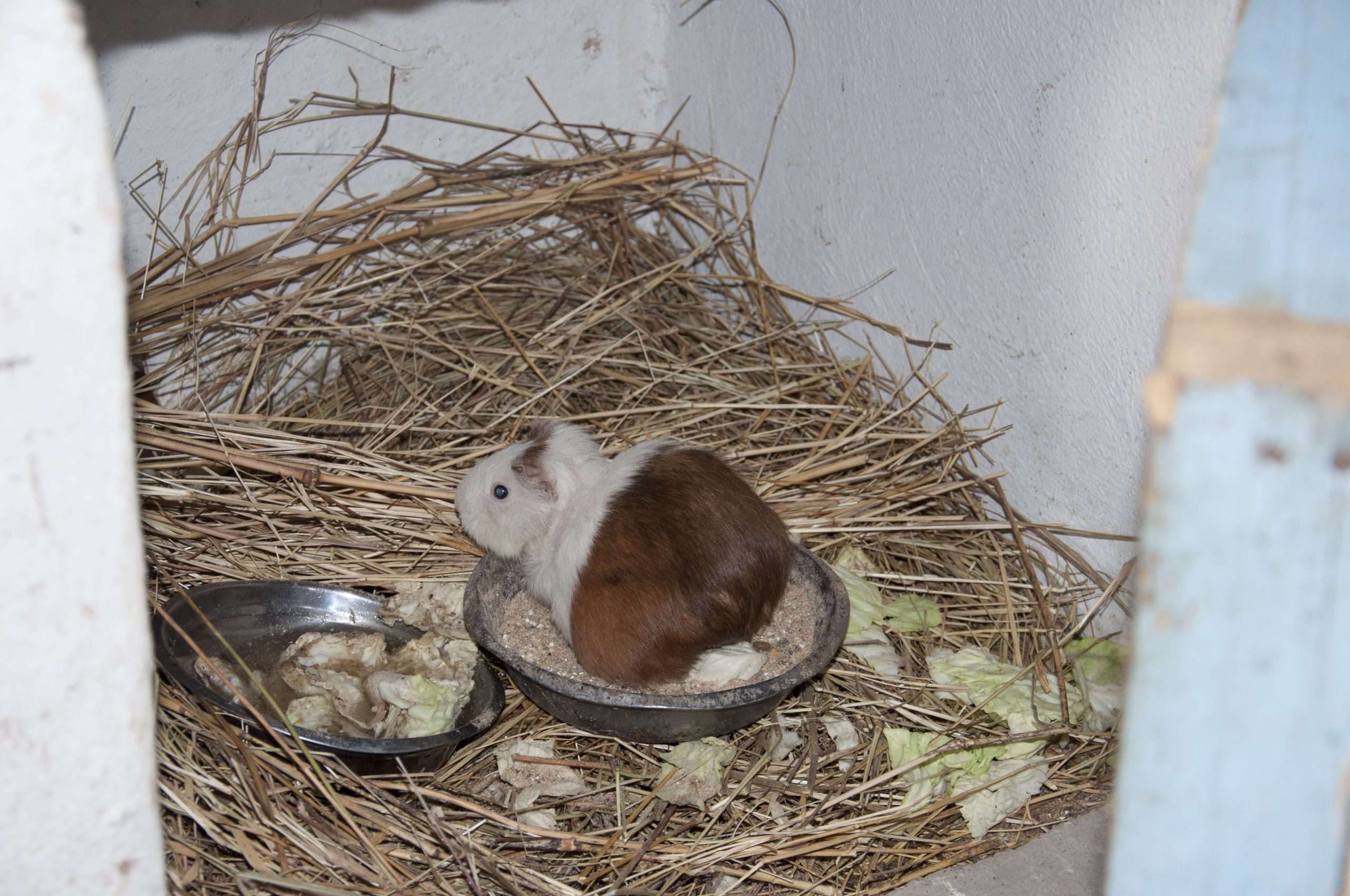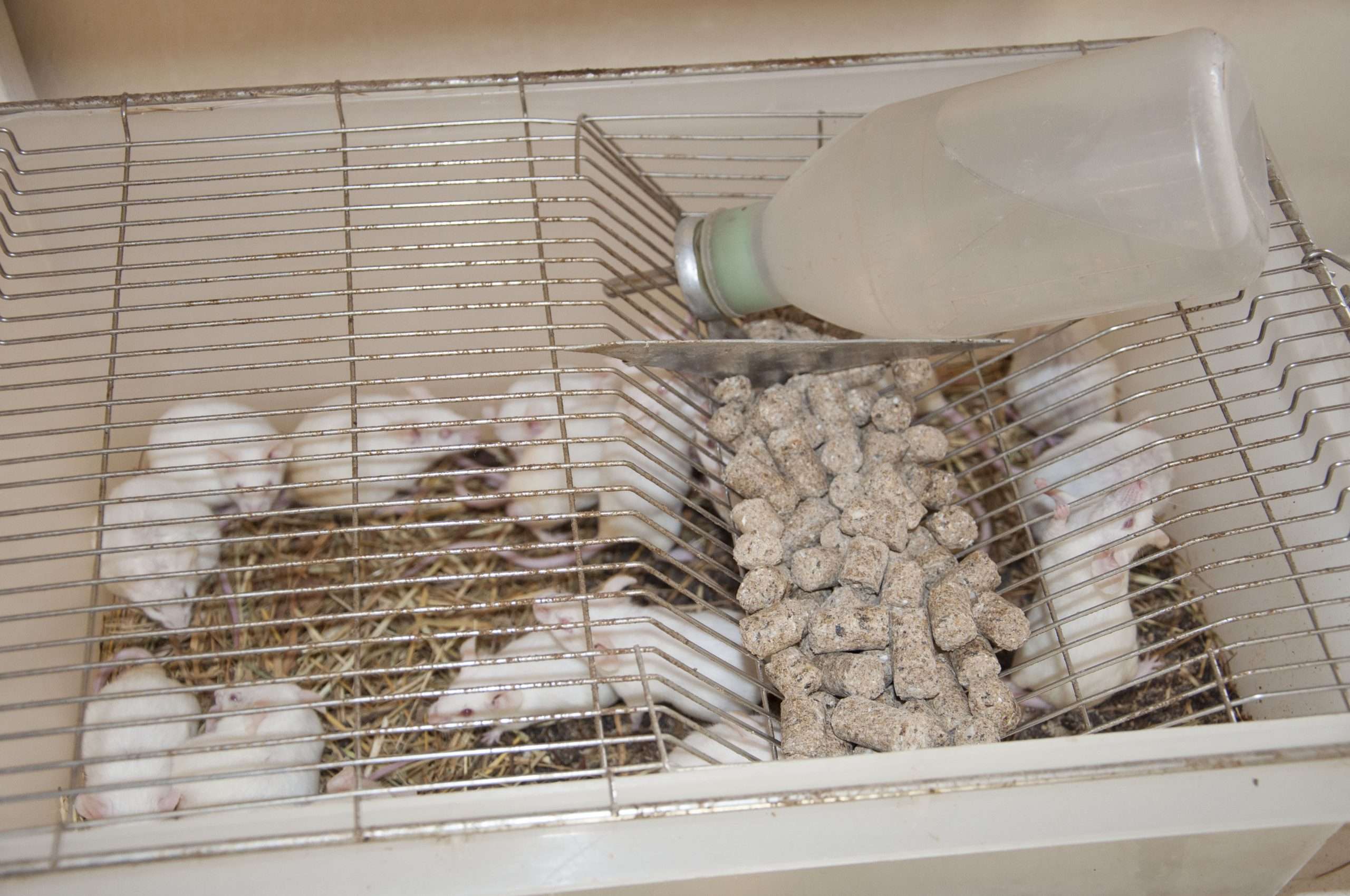Research Units at TIDRC
-
Malaria Research and Training Unit
-
Vector Biology and Control Research Unit
-
Arboviral Diseases Research Unit
-
Bioinformatics Unit
-
Social Science Research Unit
-
Tool Development and Evaluation Unit
-
Molecular Biology Lab
-
Parasitology Lab
-
Bioassay Lab
-
Arboviral Diseases Research Lab
-
Microbiome Lab
-
Genomics Lab
-
Malaria Parasite Culture Facility
-
Insectaries (Sekoru + Awash)
-
Animal House Facility
- Administrative Unit
Gel Running and Documentation Room
Microscopy and Dissection Room
Membrane Feeding Room
Insectary
TIDRC has a standard mosquito insectary (14.7 m x 8.7 m) which has been established in 2010. In addition to basic insectary facilities, it is equipped with Insect Growth Chamber, Stero microscopes, Compound microscopes, Humidifier, Heater,
Water distilling machine, etc., There is Anopheles arabiensis colony maintained in the insectary which is fully susceptible to DDT, organophosphates, carbamates and pyrethroids and thus used as a reference colony for insecticide susceptibility test, wall bioassay for IRS quality control, cone bioassay for evaluation of LLINs efficacy test, membrane feeding assay, residual efficacy test, decay rate test, etc.
Insectory Room At TIDRC
Parasitology and Immunology Laboratory
The Parasitology and Immunology Laboratory (8.7 m x 7.3 m) is equipped with ELISA plate reader, Washer, spectrophotometer, Analytical balance, vortex, pH meter, Refrigerator, Freezer -200C, Compound microscopes, Fluorescent microscope, Membrane feeding machine, etc., and is dedicated to run:
- Immunologic assays such as sporozoite ELISA to determinate mosquito infection rate
- Blood meal ELISA to determine blood source in mosquitoes
- Quantification of level of enzyme activity to assess metabolic resistance in mosquitoes
ELISA Room
Entomological Laboratory
TIDRC has the first Molecular Entomology Laboratory in Ethiopia which has become fully operational in 2012. The laboratory has an area of 8.7 m x 7.3 m. All mosquito morphological identification and ovarian dissection is done in the lab. Moreover, the molecular entomology lab has state-of-the-art facilities (Conventional PCR Thermocycler, RT-PCR Thermocycler, Microvolume Spectrophotometer, Ice Maker Machine, Water Purification System, -200C Freezer, -860C Freezer, Heat Block, Cold Centrifuges, Micro centrifuges, Water bath (-370C), Digital analytical balance, Gel Electrophoresis system, etc.,) to do:
- Molecular identification of mosquito species complexes using PCR
- Determination of blood source of mosquitoes using PCR
- Detection of mosquito infection using parasite PCR
- Detection of insecticide resistant alleles in mosquitoes such as kdr-East, kdr– West mutations, ACE1 mutation, N1575Y mutation and rdl
PCR Room
Parasite Culture Unit (8.7 m x 3 m)
TIDRC has established Plasmodium falciparum and P. vivax malaria parasite culture unit for drug efficacy study, mosquito infection experiment, etc., The culture unit has Class II Laminar Flow Hood, Carbon dioxide incubator, Shaker incubator, Vacuum pump, Inverted Phase Contrast Light Microscope, Autoclave, etc.,
DNA Extraction Room
Experimental Huts
Malaria Sphere
The malaria sphere occupies 18.9 m x 9.7 m. It is the only set up in Ethiopia to be used for:
- Host preference study
- Mosquito dry season survival strategy
- Mosquito flight range study
- Mosquito infection experiment
- Vector control products efficacy evaluation,
Biotechnology – based applications such as transgenic/GM mosquitoes, etc






